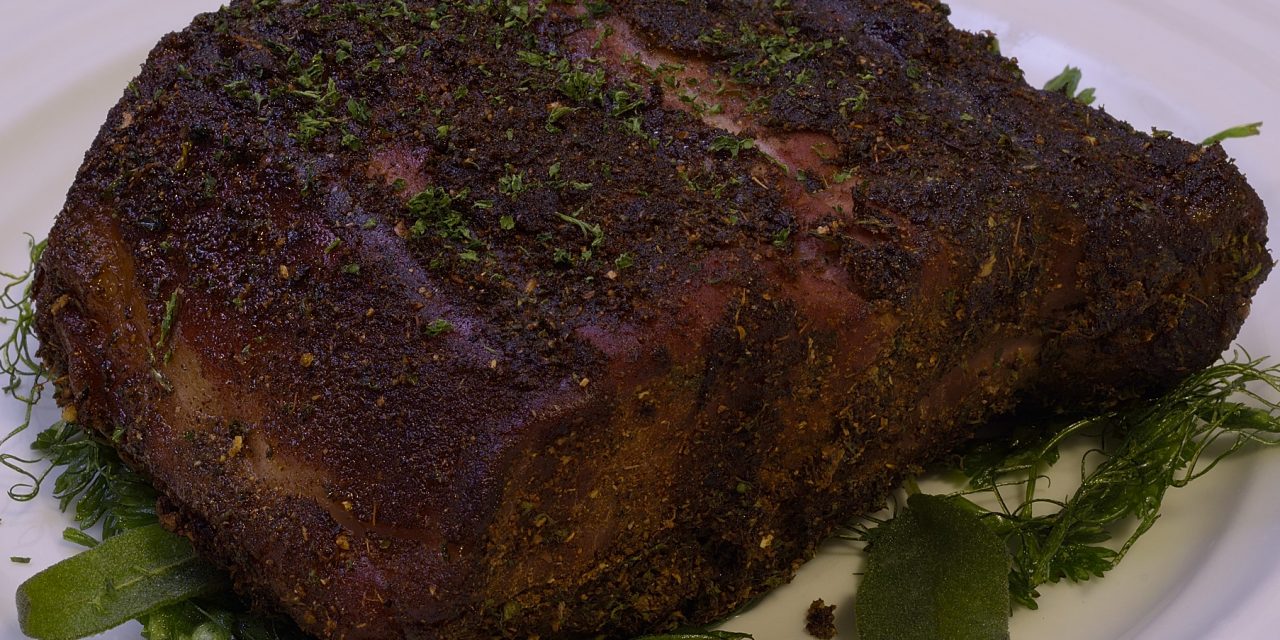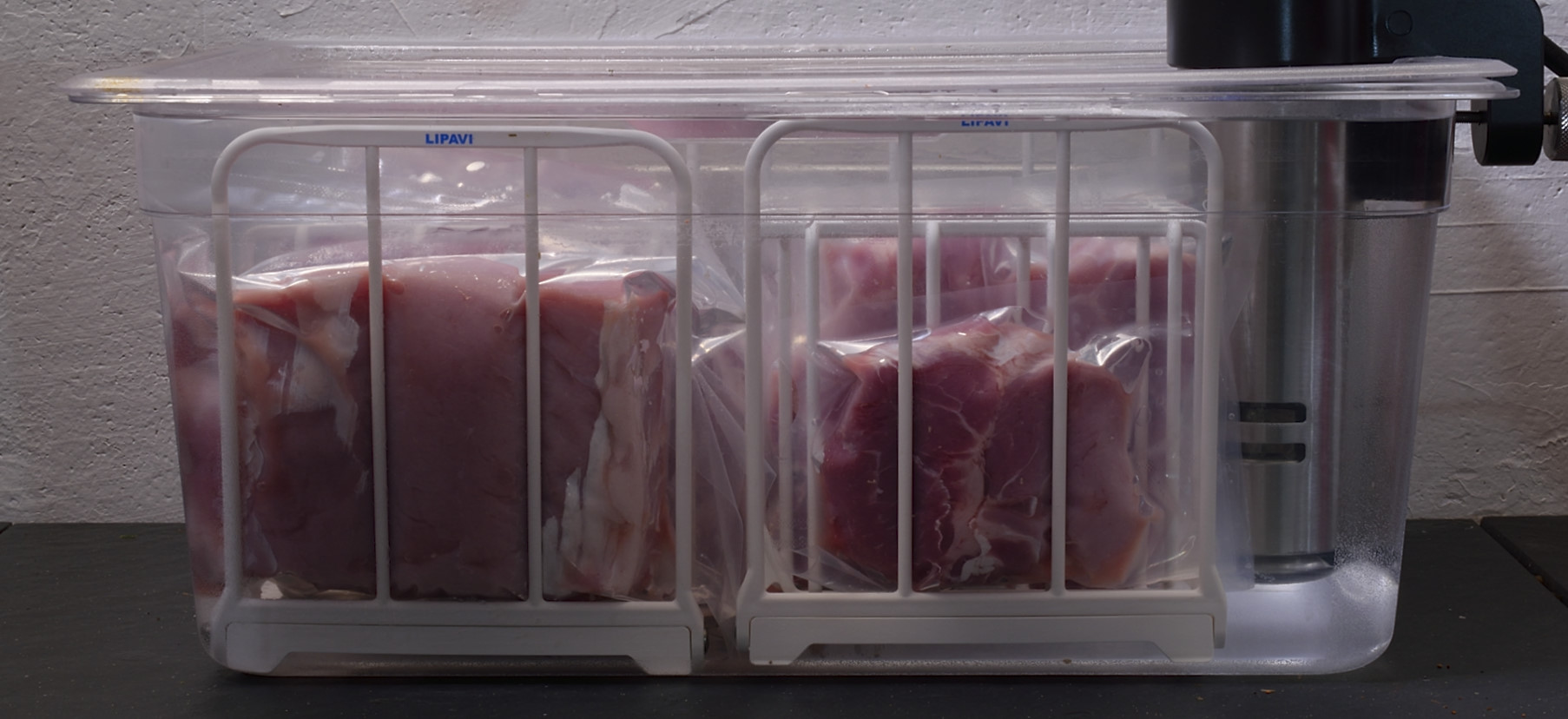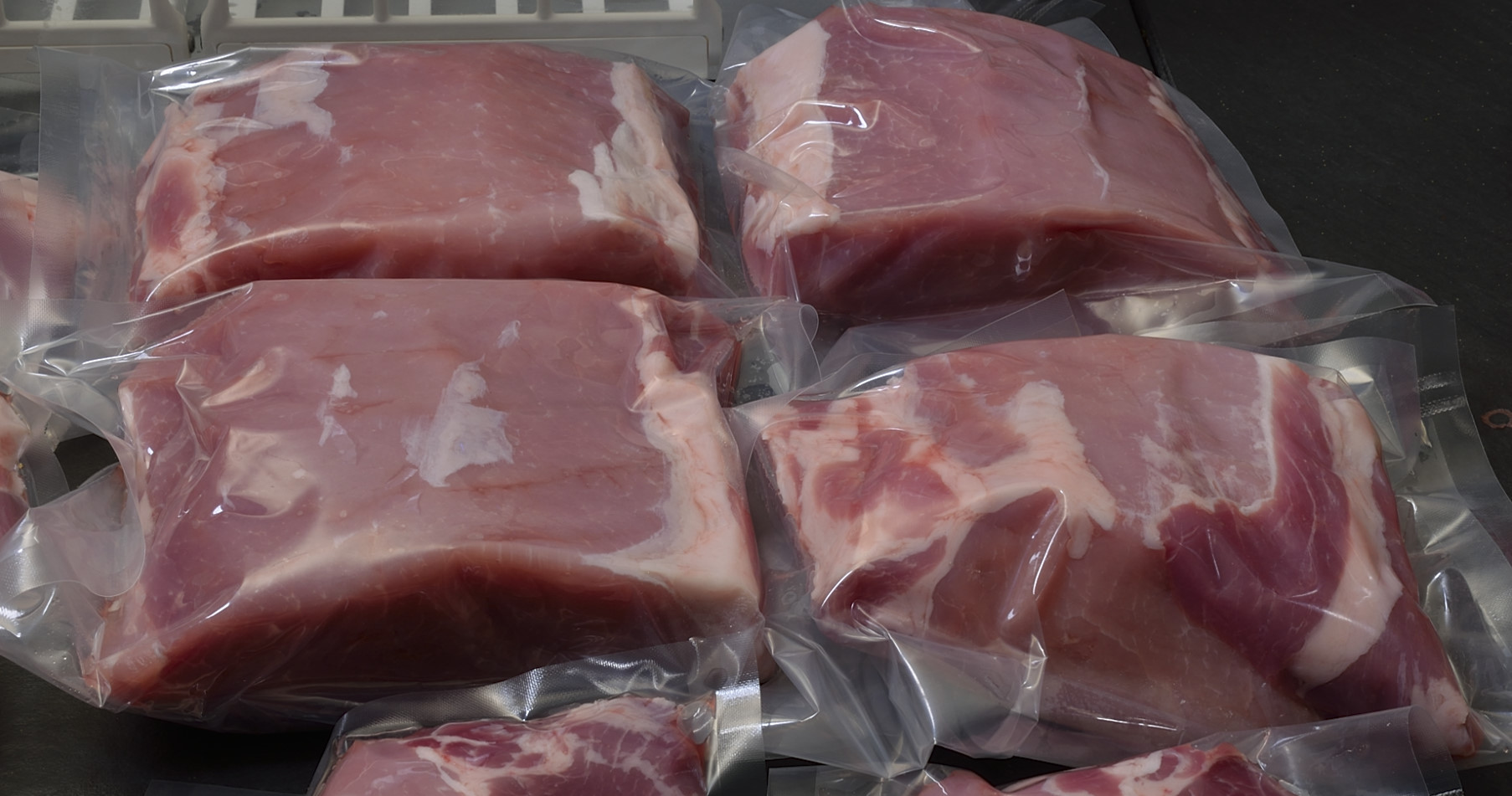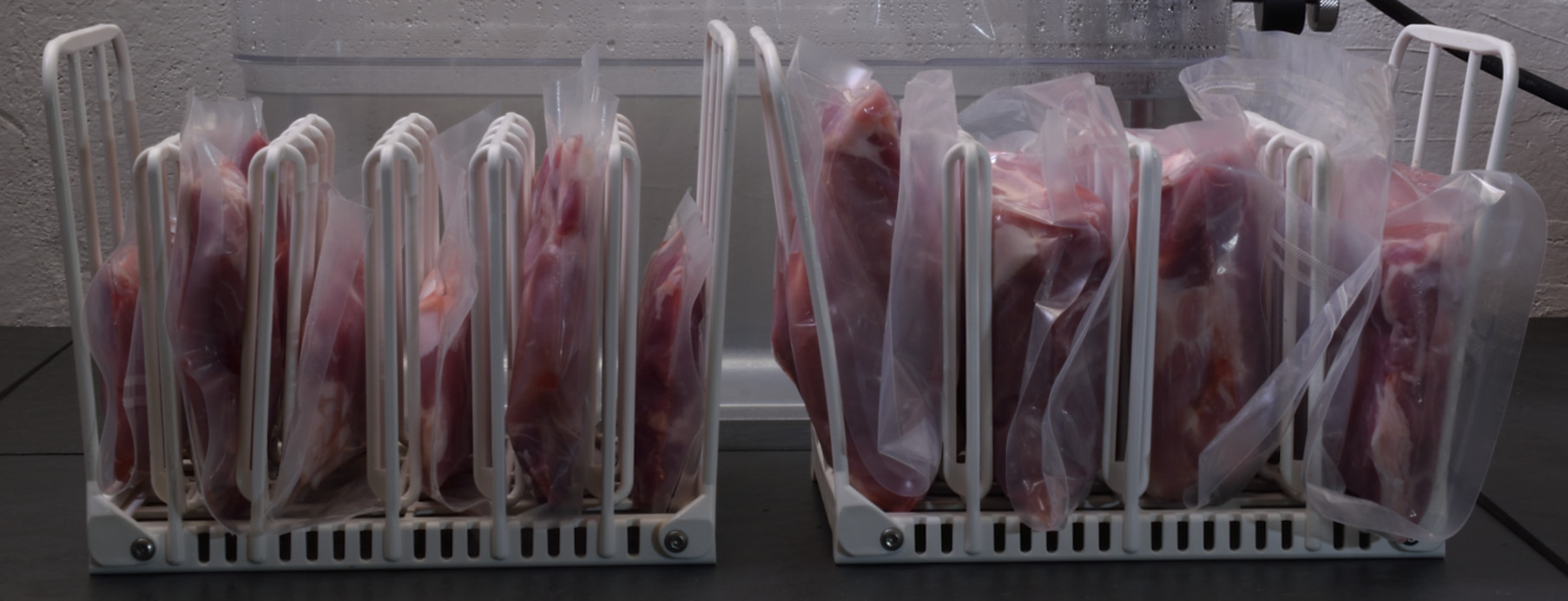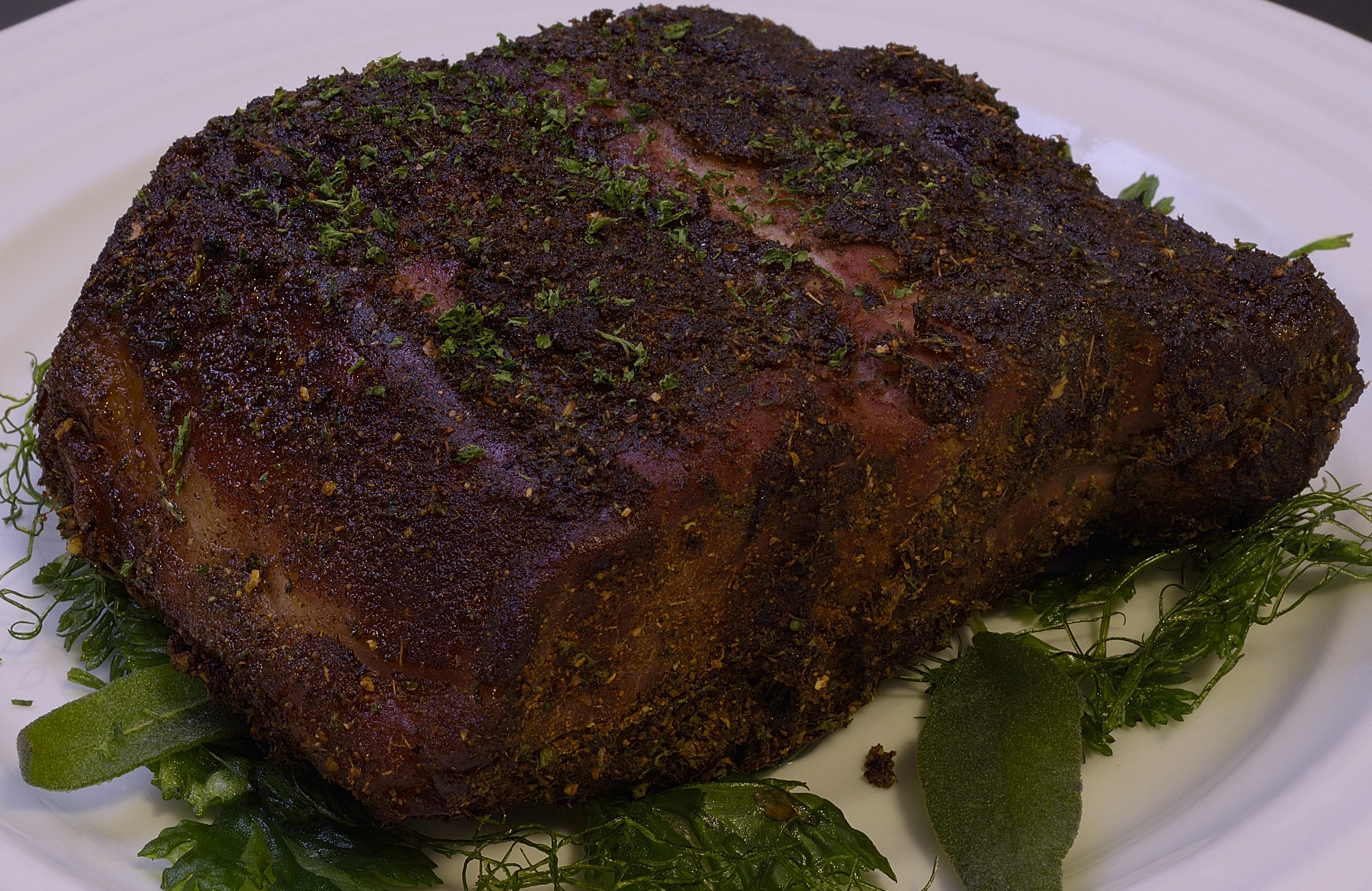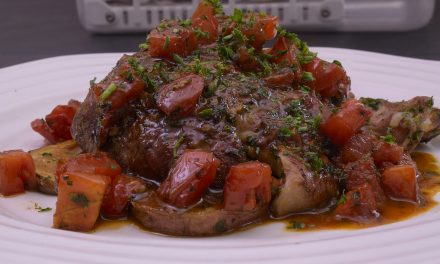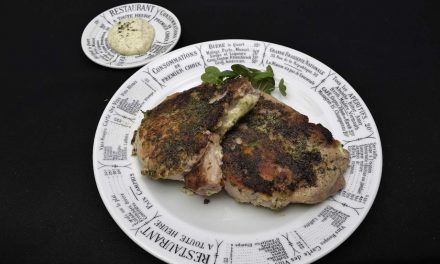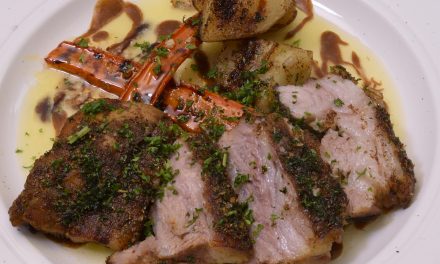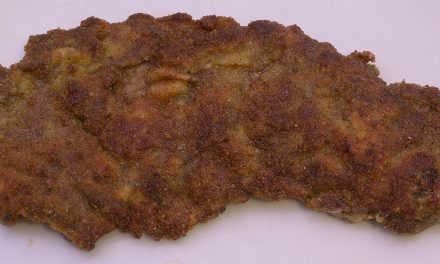Dateline, 5/11/2020: Pork Loin’s Complaint
Center cut pork loin roasts have to be one of the most commonly documented fails in our ever burgeoning FB Sous Vide Group. The end product is commonly dry, tough and mealy, even with the benefits of sous vide. You would think that a cut from the same anatomical vicinity as a (beef) rib eye or New York steak would be one of the best cuts on the pig, but this is not so. I’m here to tell you it’s not your fault. Well, it might be, but your center cut roast pork loin has a good chance of being underwhelming in its culmination even if you do everything right. Pork is the anti-beef, would that such a thing existed. Meaning?
Pork spareribs are arguably the most enjoyable cut on the pig. Beef short ribs are the corresponding cut, and, sure, they have a following of their own. Still. As beloved as pork spare ribs? NO WAY. Beef back ribs are the anatomical equivalent of baby backs, but they just don’t match up except as a bony Flintstonian alternative. Prosciutto or an otherwise cured and smoked pork leg is absolutely magical, while a steer’s hind leg is just a bunch of tough, hard working “round” muscles. Pork shoulder (butts) are uniquely perfect for various applications. Beef shoulder (chuck/clod) is useful but hardly comparable. And so it is with thick sliced loin cuts. Beef? AWESOME. Pork? Not so much. Why is this? The answer may not even really matter. Instead, we will focus on undoing the complaint; we will endeavor to reverse the tendency. We will eschew equivocation of pork with beef and start anew.
Basic Ingredients:
Pork loin, I started with a whole one.
Egg whites, as needed, mixed with an equal volume of cold water. It doesn’t take much. I buy egg whites in the carton–they are also available dried–that’s what we used in this demo, but the basic procedure is always the same. A little bit of egg white makes the seasonings cling to the protein’s surface.
Seasonings, as needed.
Vegetable oil, a few drops. I use the spray stuff.
Melted butter, as needed.
Other things we used
Muffaletta relish:
Pickled vegetables
Broccoli.
American cheese. That’s right, the quarantine staple.
Sesame hamburger buns.
French rolls.
We have an even more detailed article on how to prep a whole pork loin HERE.
Take it from the top

This is the whole pork loin from stem to stern as it were. It starts just behind the front shoulder and ends just before the hip. The shape is uniform, it looks perfect for roasting as is. As it turns out, it’s not. For an even more detailed discussion about pork loin click the link HERE.
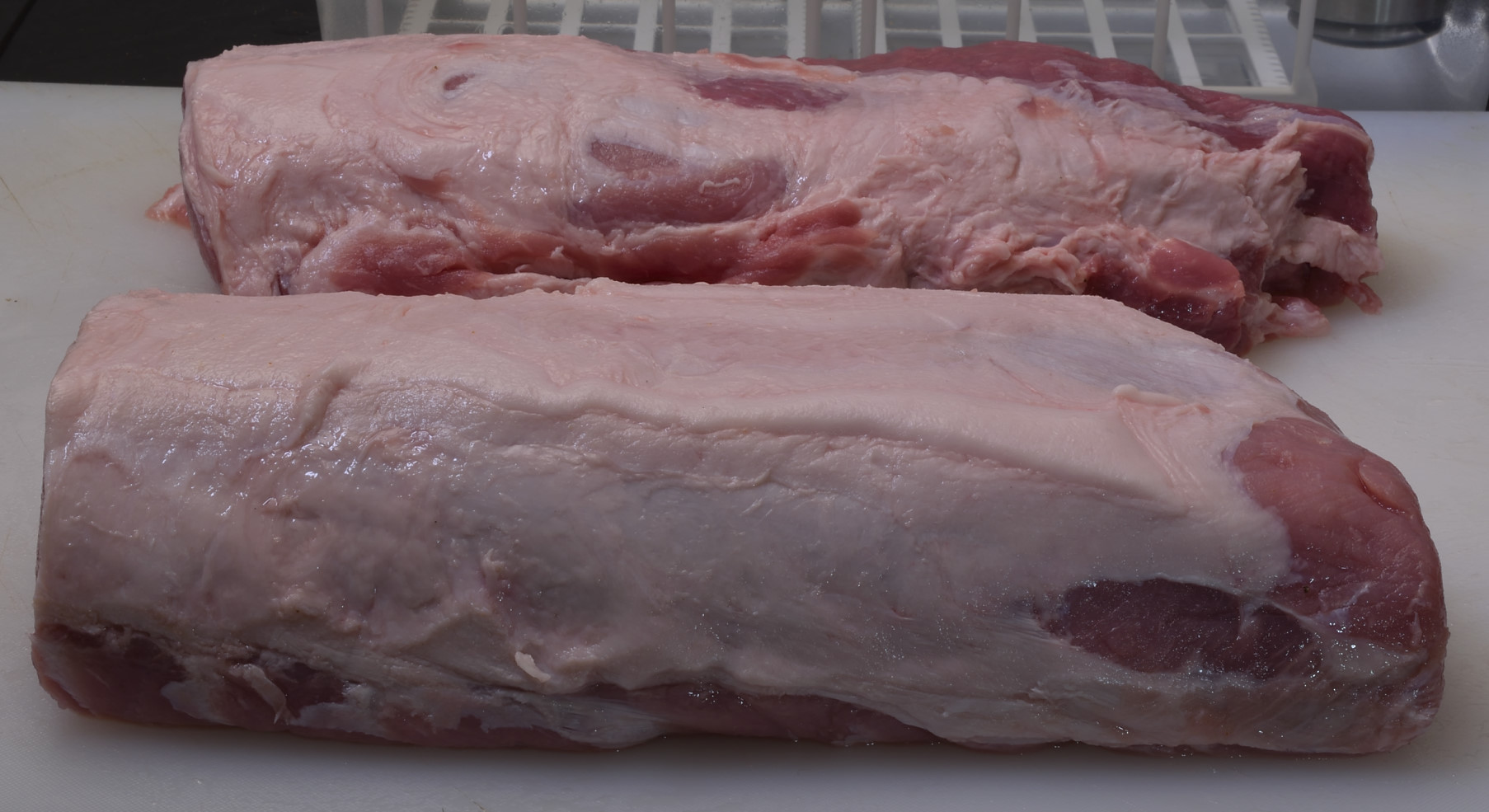
Cut in half. In the back ground, the right end of the section meets the shoulder. In the foreground, the right end of the section meets the hip.
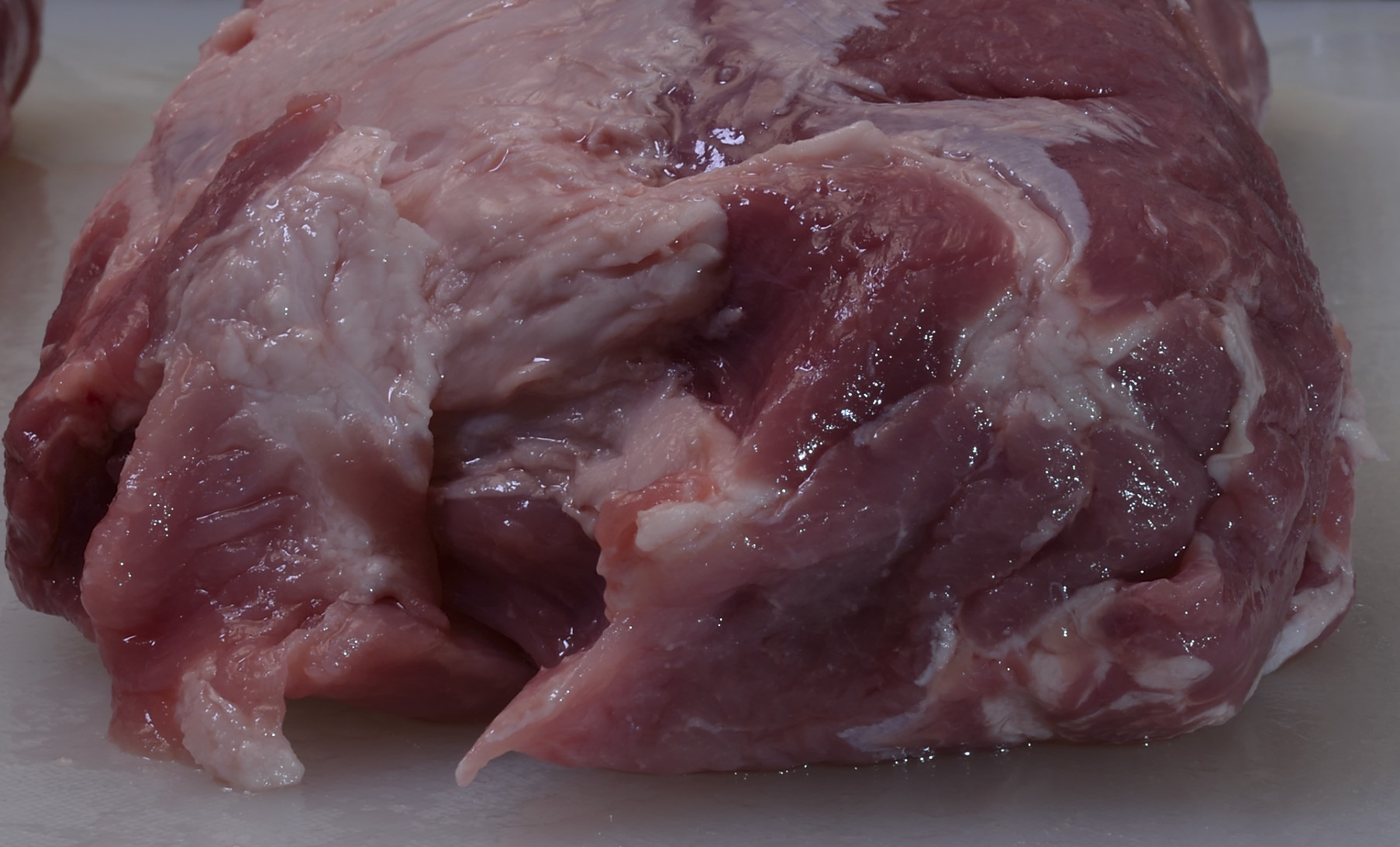
Above: the intersection at the shoulder, similar in appearance to that scrappy end of the beef rib eye/prime rib that I tell everybody is the best cut. In this case, the truth is correspondent. As ugly as it is, this is the tenderest and juiciest part. 2-3 lb roasts cut from this end stand the best chance of coming out moist and tender–but this post is devoted to meeting the “center cut challenge.”
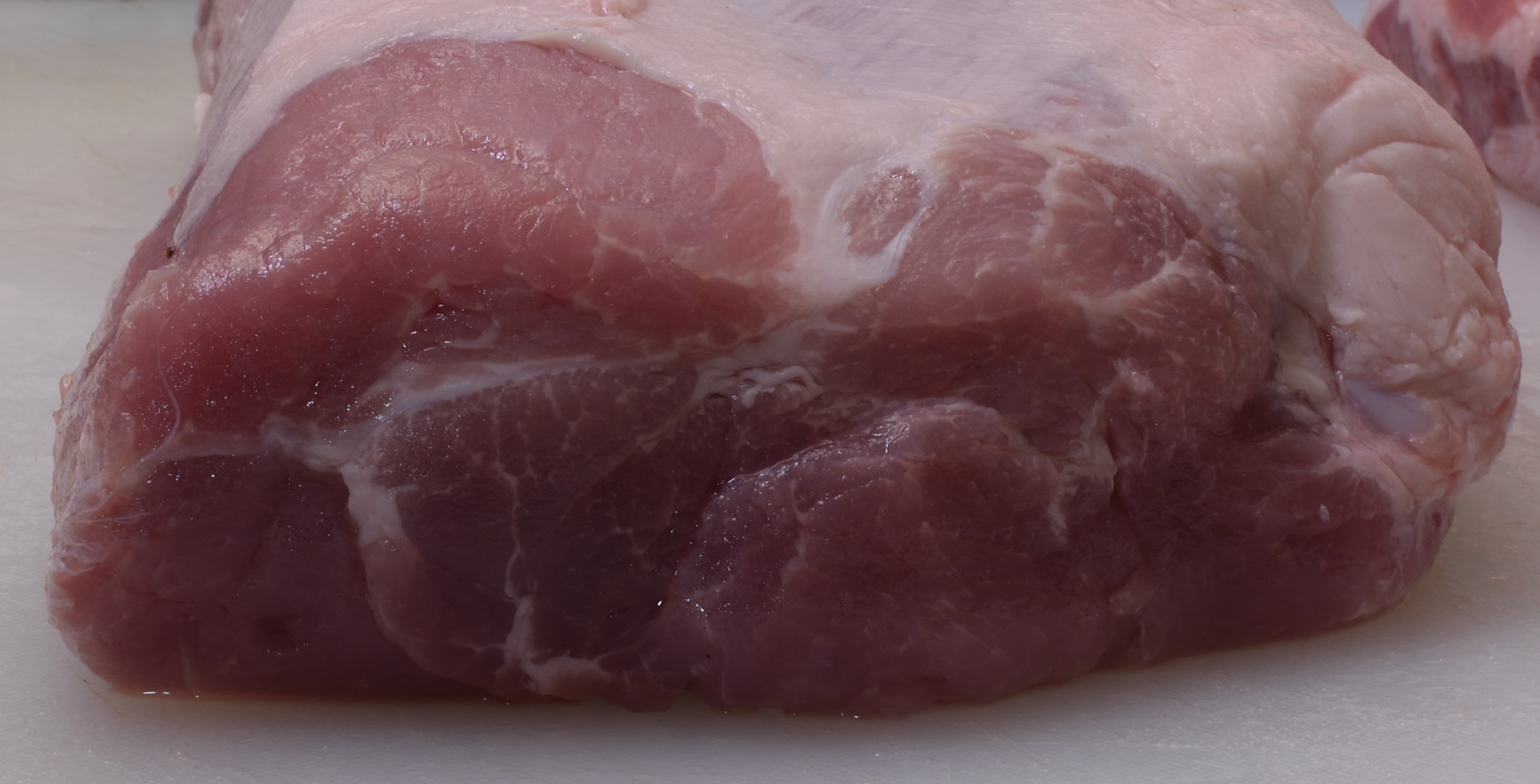
Above: Where the “sirloin” ends at the hip. Also tender and moist, although not so much so as the other end.

Above: this is where the loin was cut in half. Looks awesome, nice shape, like a rib eye/New York, right? Looks great. Not so great. This is the area where people encounter disappointment, the intersection of broken dreams, as it were. It’s rather TOO lean, for one thing.
The skinning of the cat

There are a lot of ways to do this. I took some small steak sized pieces off of each end–three sirloin end steaks on the left. Five shoulder end steaks on the right. They get processed and are then used to make pork cutlets and the like. A small pile of scrap in the back there, that gets used to make Espagnole. I purposely harvested the four roast sized pieces from the “center” area that creates the most difficulty. We will meet the challenge head on.
The steaks/medallions are vacuum sealed.
The roast sized pieces are vacuum sealed.
Everything is loaded into racks and processed at 135 F/57 C–but for different intervals. The medallions are removed after three hours, shocked cold, refrigerated and utilized for other applications.
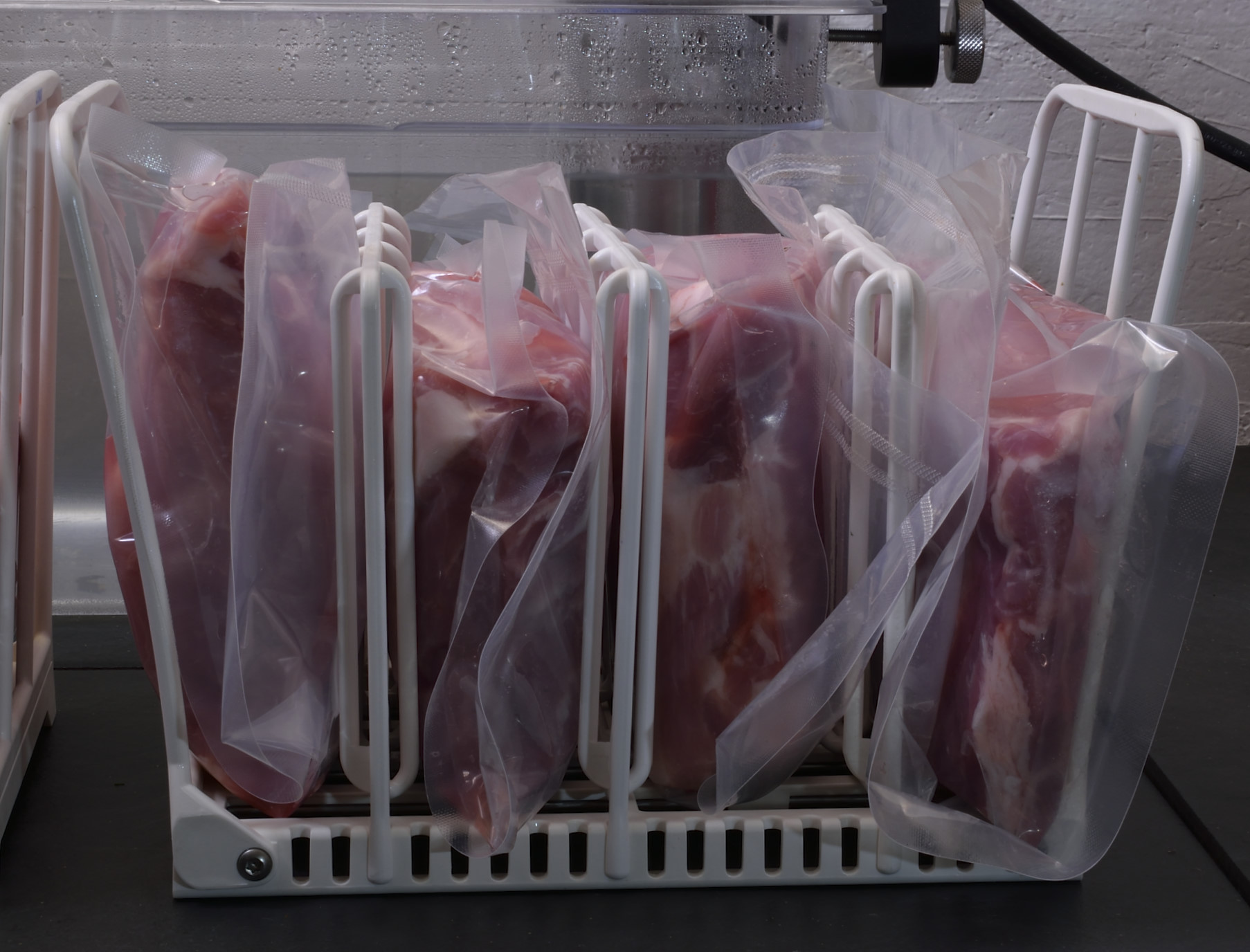
The roasts are sous vide processed/pasteurized at 135 F/57 C for 6 hours. They are then shocked in iced water to 70 F/21 C and refrigerated at 40 F/4 C. They will keep at least two weeks in this sealed refrigerated state. I have kept them considerably longer without incident, but you don’t want to just let stuff pile up in your fridge, right?
Smoke’em if you got’em
An encouraging word
I don’t want anybody to think that you have to smoke the pork roast in order for it to be good. Contrary to popular belief, hot smoking/barbecuing adds flavor to the surface–not the interior. The flavonoids in smoke are just too big to penetrate the protein matrix. The cooking process is decidedly unromantic. Results have nothing to do with what we imagine or wish for when we stage our roast into the oven, smoker or pan. Assuming the same temperatures and humidity are applied, smoking and oven roasting affect tenderness, texture and moisture content equally. Meat will eventually dry out in the smoker just like it will in the oven. For things like jerky, that’s what you want, right?
Results have everything to do with science, and simple science at that. Moisture is removed from foods as a function of heat, time, and exposure to one medium or another–air/smoke, steam, water, oil or direct contact with cast iron, steel, copper, etc. Apologies to those who submerge steaks in molten lead or something else that I didn’t think of.
So. Not everything needs to reek of hickory. Anything smoked in the pellet grill at 180 F/82 C or thereabouts will be be blessed with similar results if roasted in a conventional oven anywhere from that same temperature up to 225 F/107 C (or thereabouts). Even the interval is usually about the same, plus or minus a half an hour or so, you know, one or two beers let’s say. We’re not operating a nuclear reactor here.
Segue to the aftershock
Remove the roast from the refrigerator. If the juices have jelled, dip the whole package in hot tap water or your running sous vide bath–I almost always have a project in process.
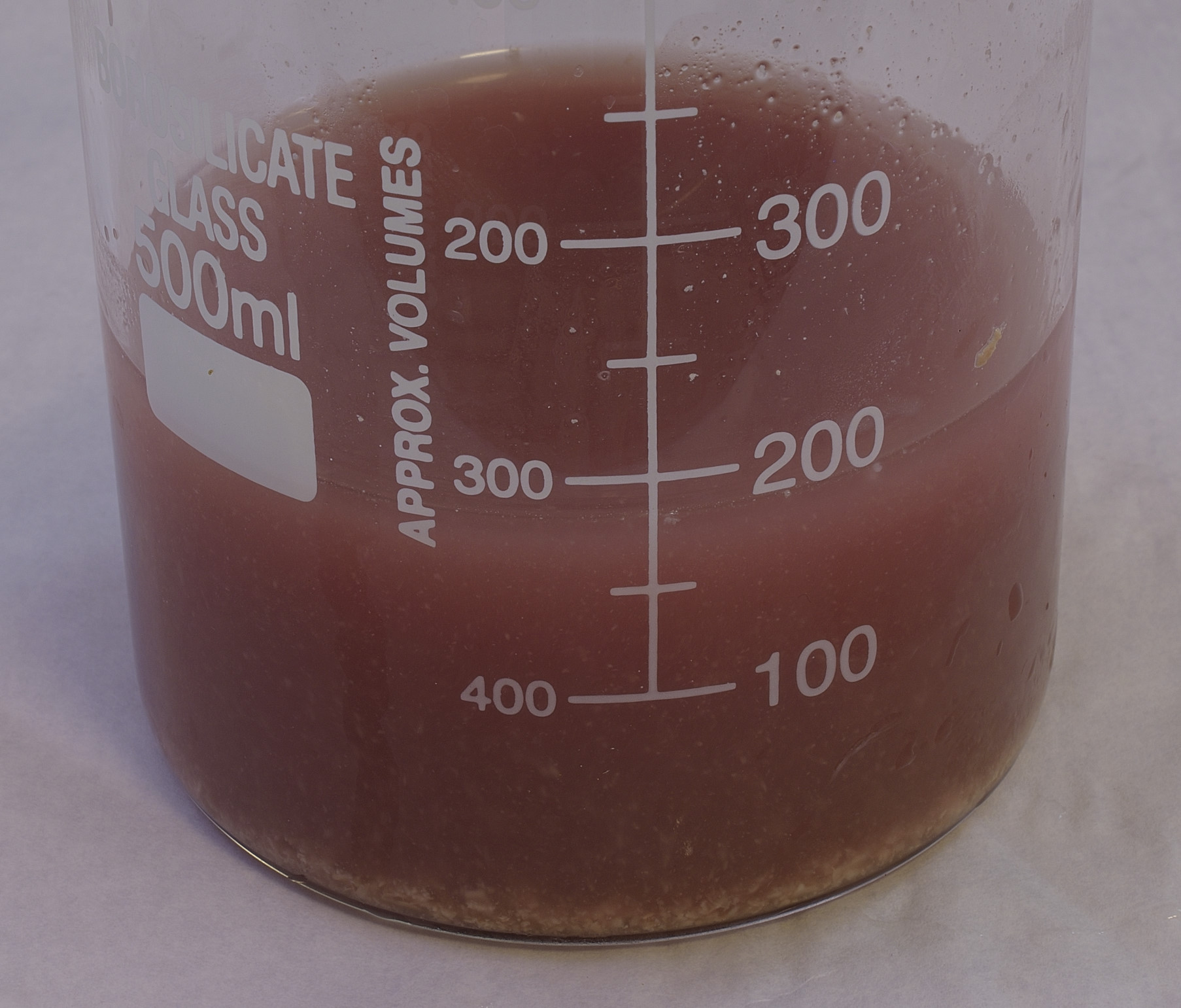
Harvest the juices and read THIS.
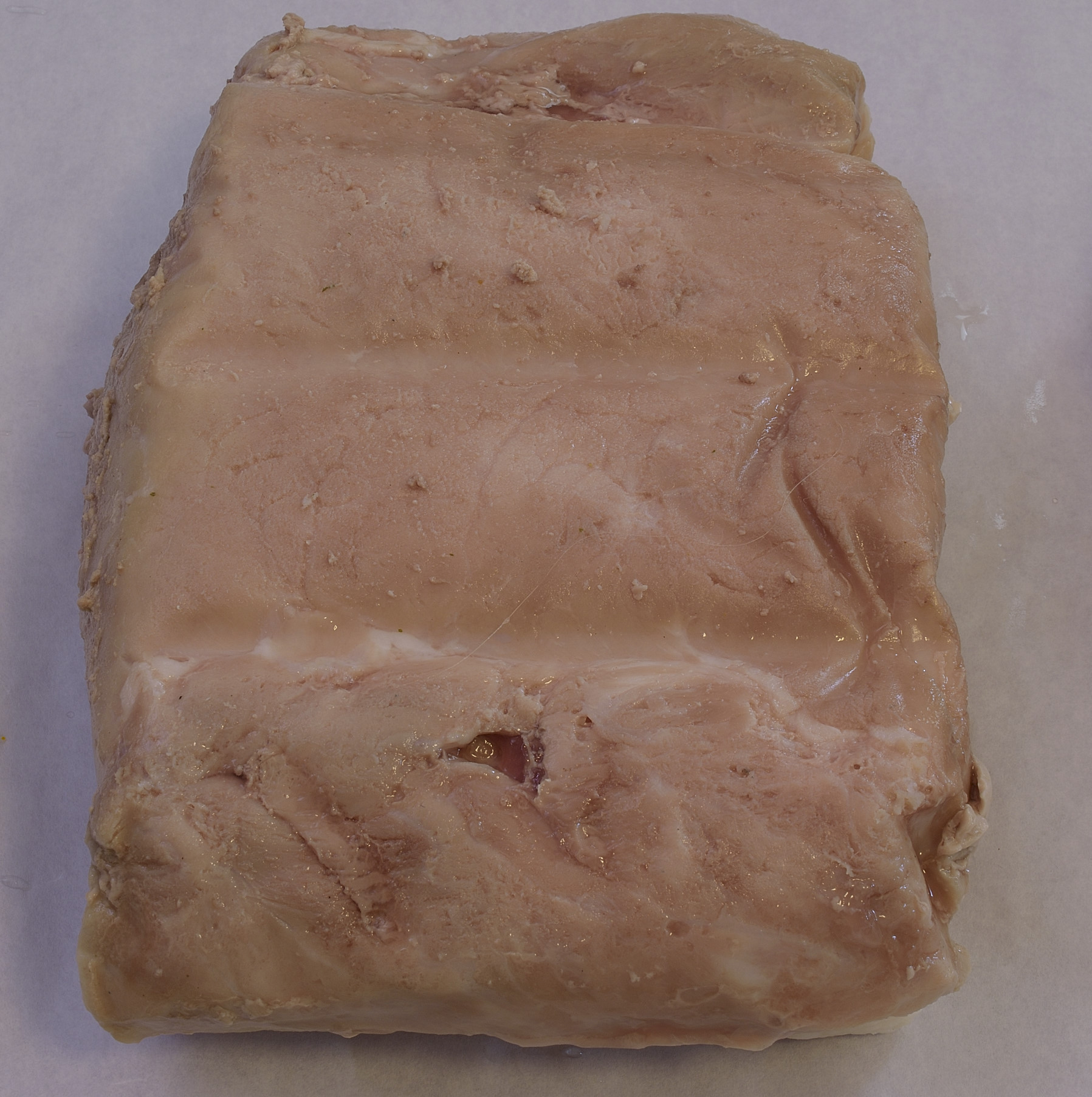
Pat the roast dry.
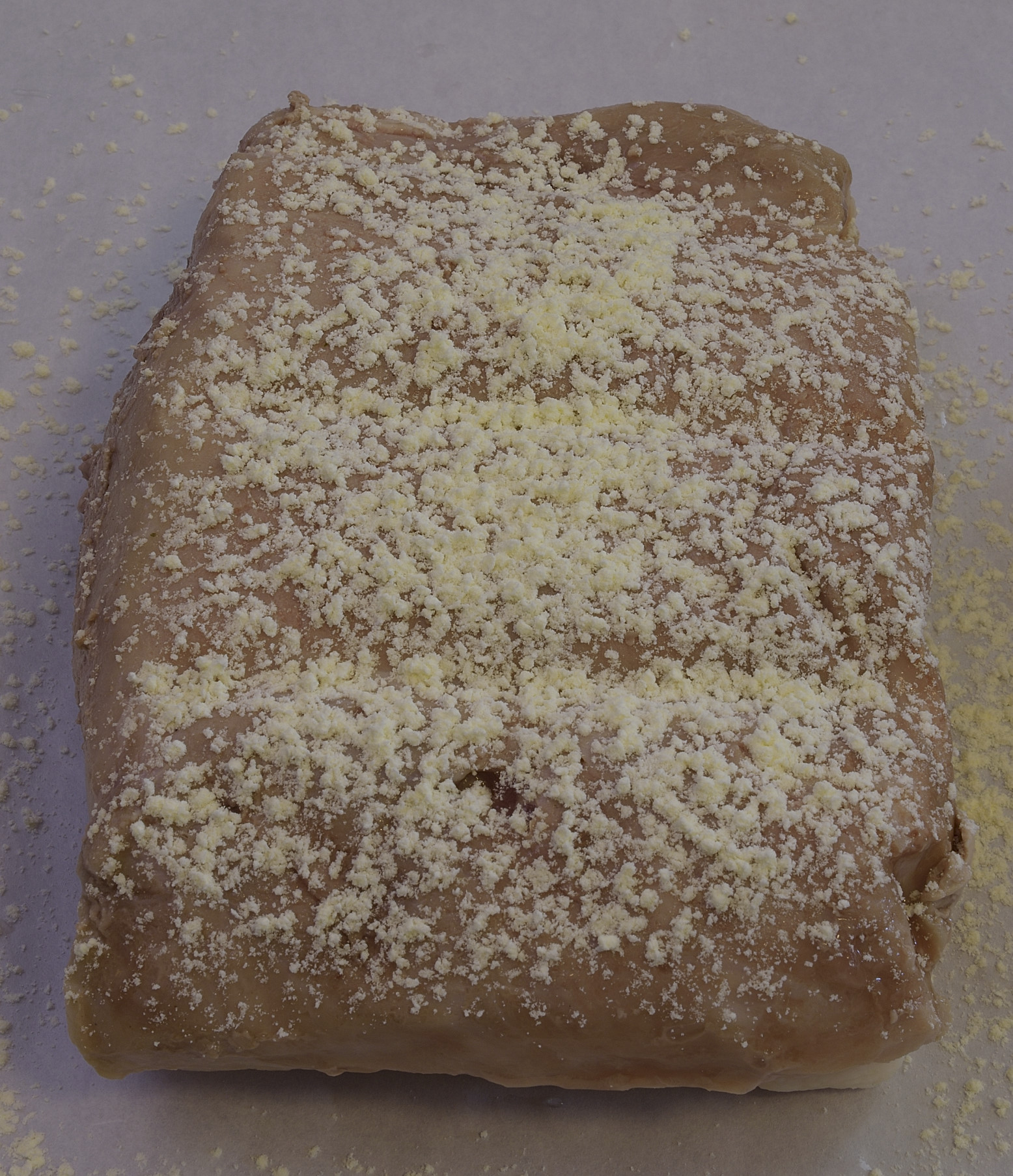
I sprinkled this one with powdered egg white, a convenient and inexpensive product. You can buy pasteurized liquid egg whites, also a handy option. Or you can separate an egg and mix the white with an equal amount of water and figure out what to do with the yolk. Same results, we’re just making the surface sticky.
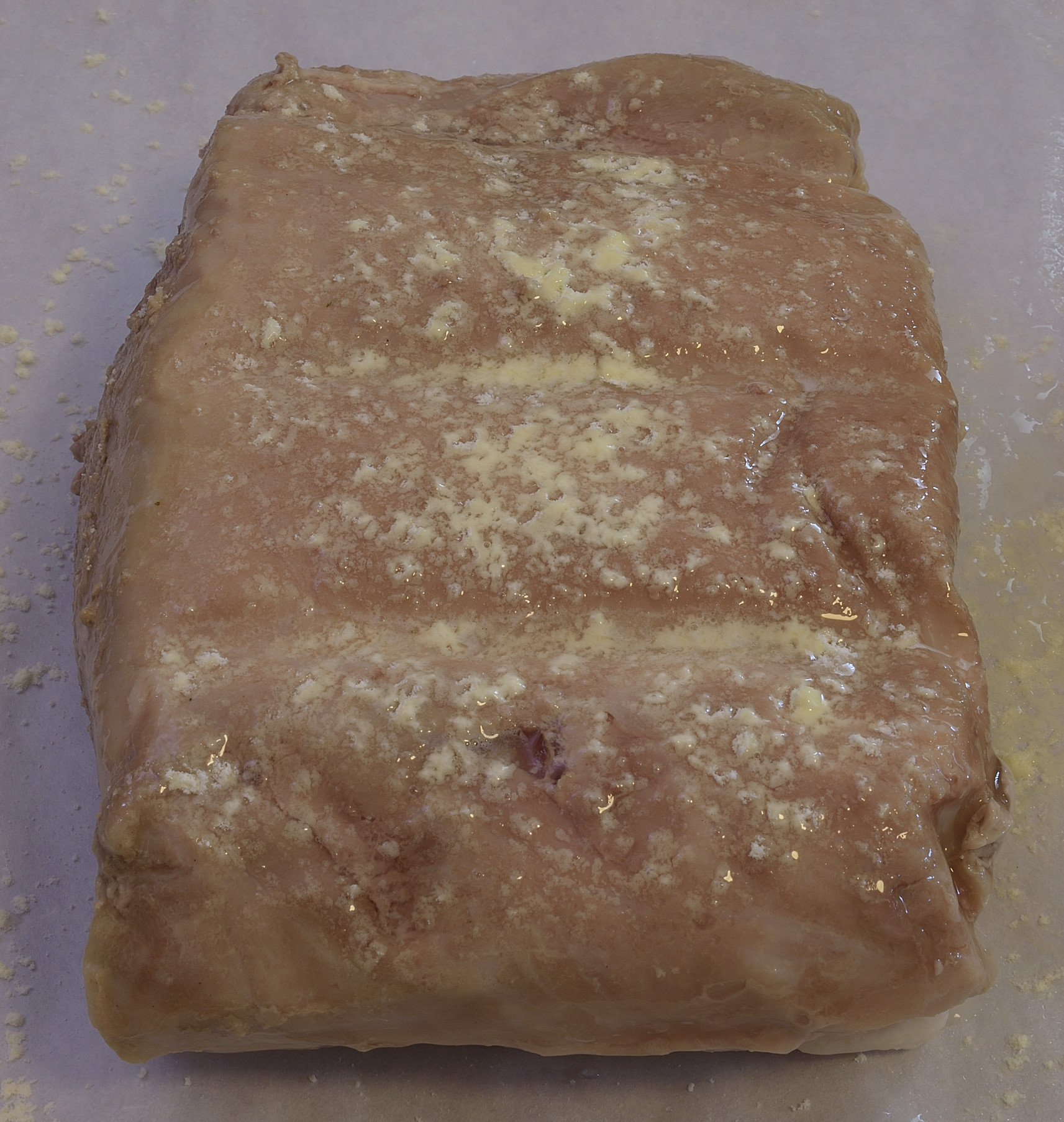
If you use powdered egg white, you spritz with water to moisten.
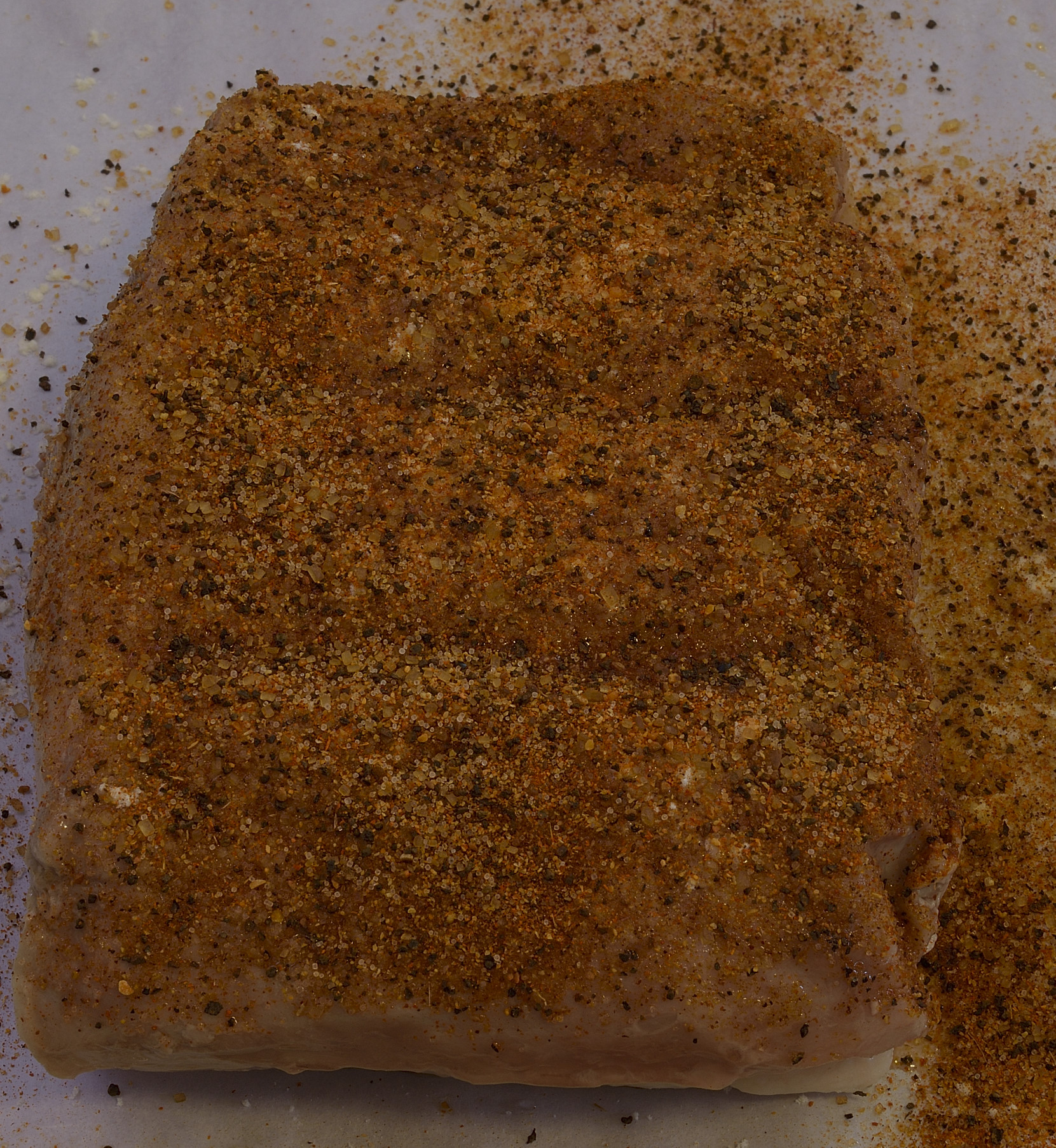
Sprinkle generously with your choice of seasoning blends or one of my recipes detailed HERE. Turn over and repeat.
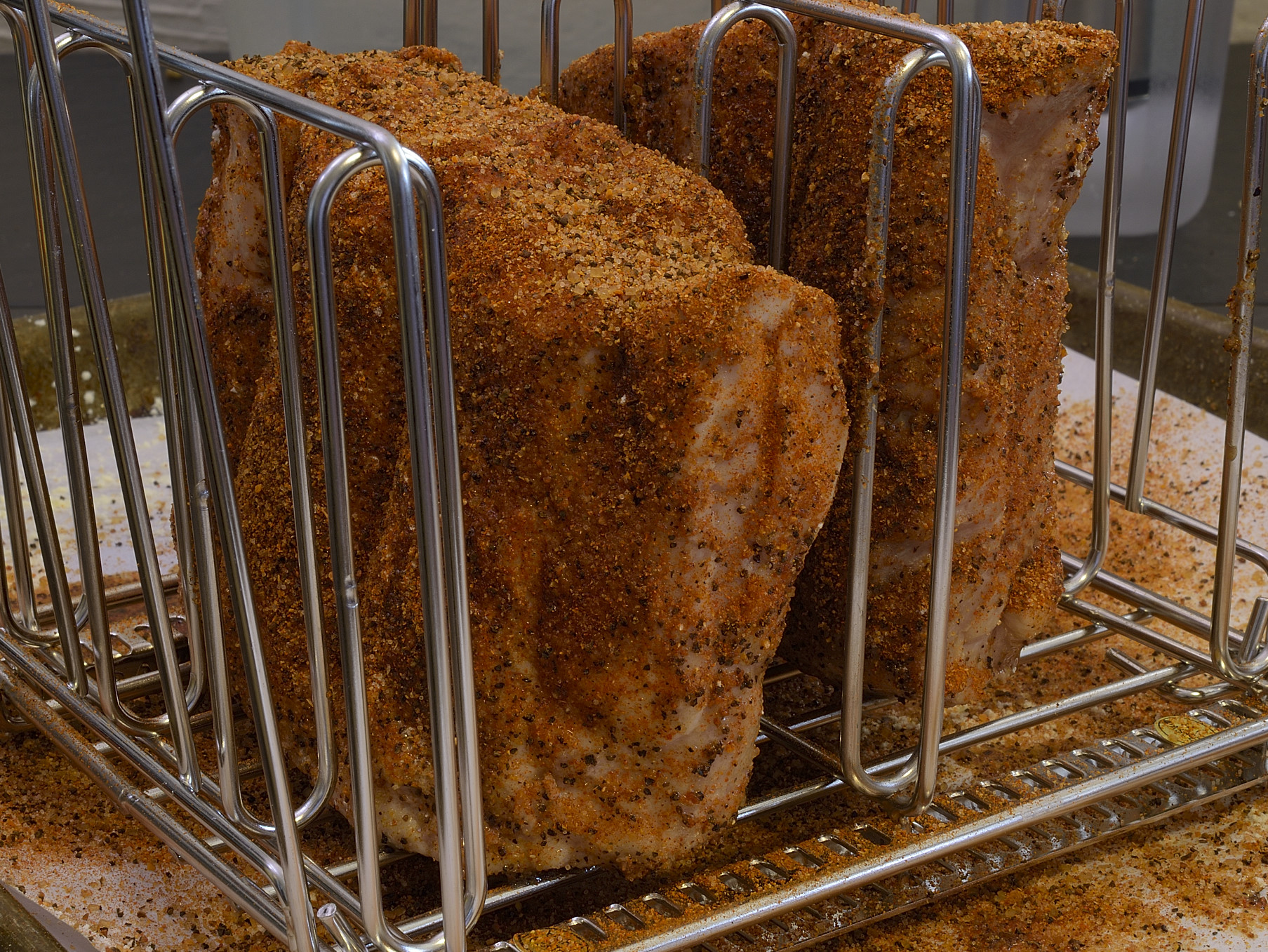
I used a stainless steel Lipavi rack. These things are designed for the bath, but are otherwise nearly indestructible. No rust, dishwasher proof, etc.
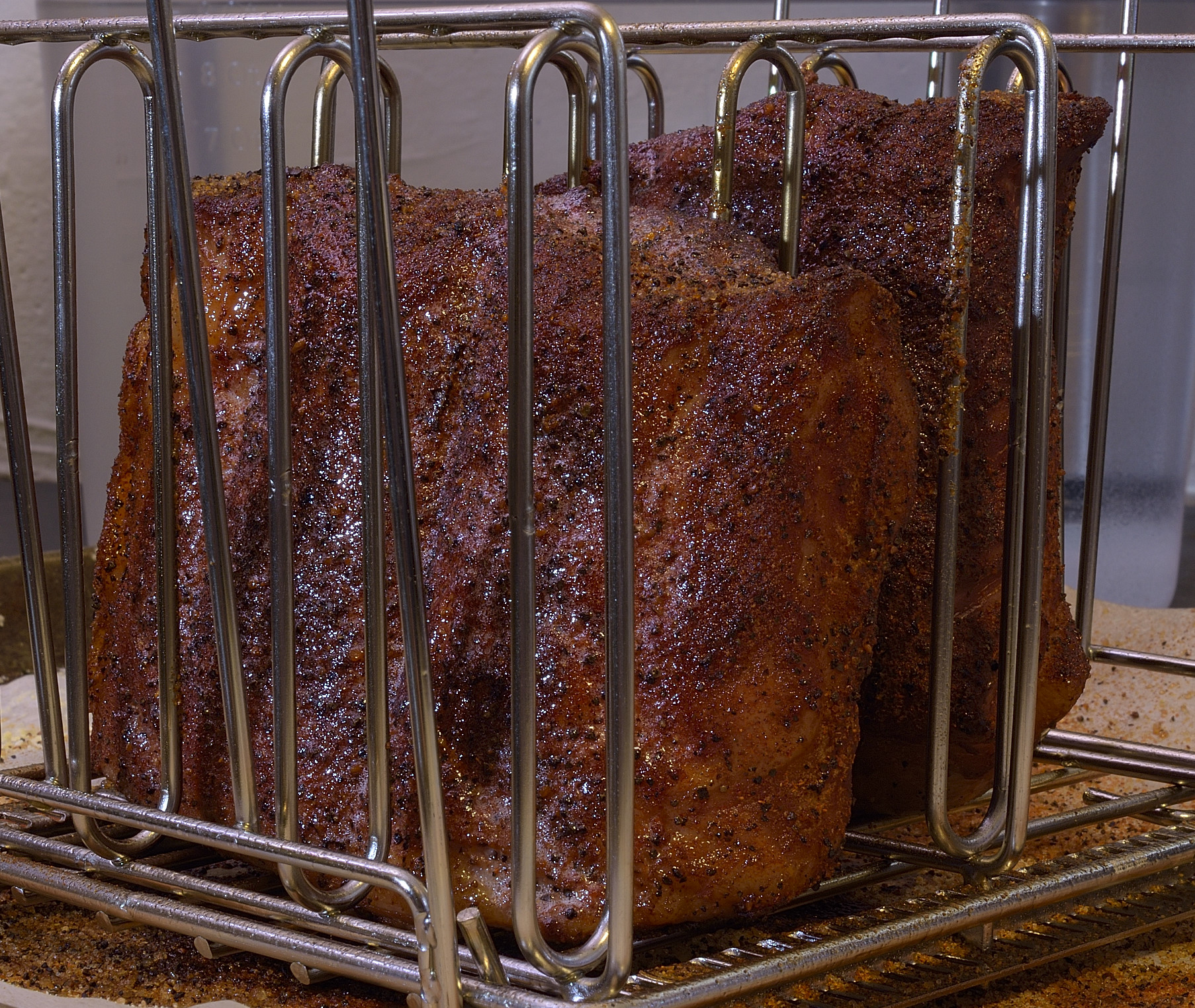
This one (above) was hot smoked 180 F/82 C for 4 hours in the pellet grill. Sometimes I go as long as six, but it’s not really about the time–whatever temperature you use, smoker or oven, you want to achieve an internal temperature of at least 125 F/52 C, mouth hot and safe.
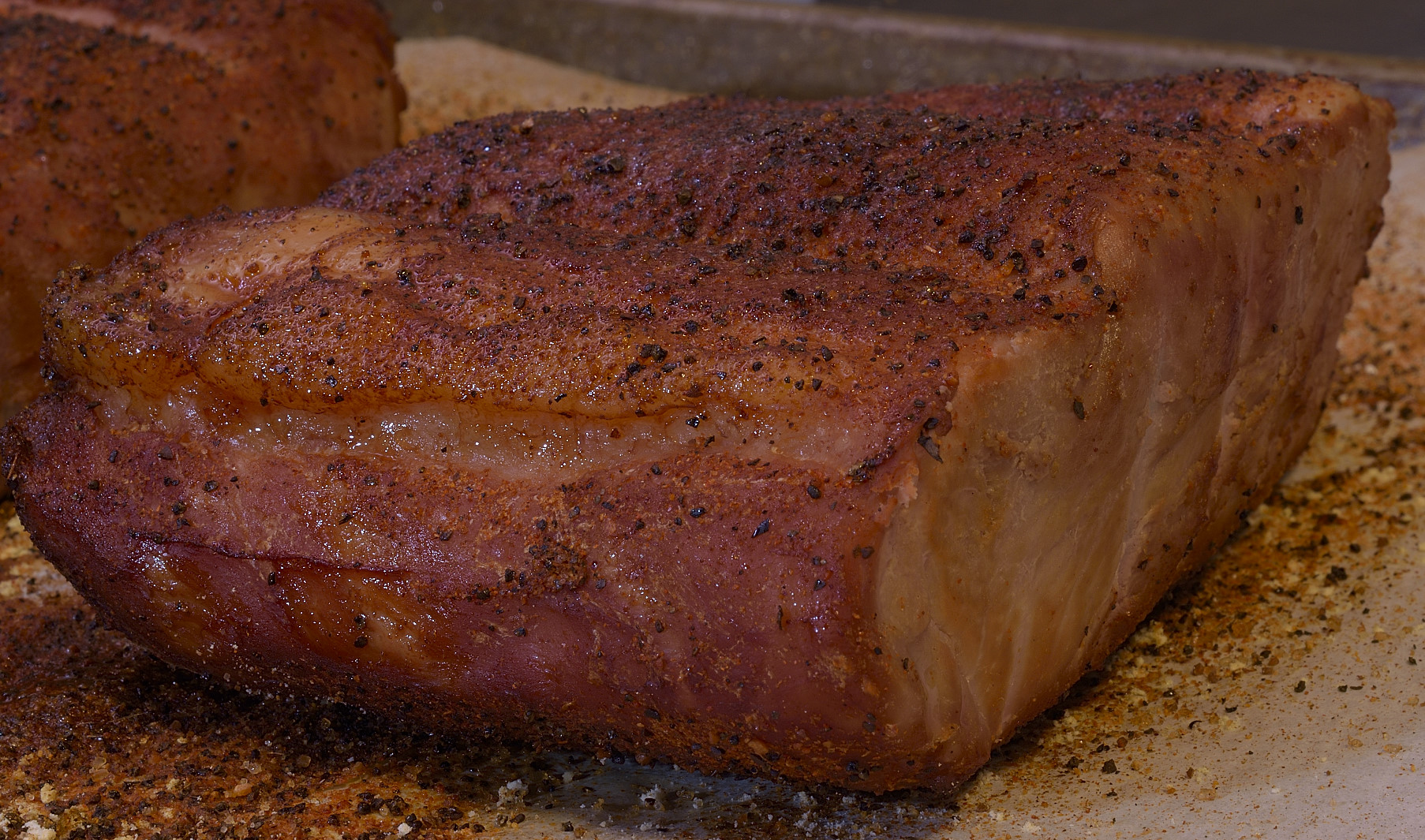
Okay, NOW what?
So far, everything we’ve done has been pretty standard for sous vide processing. We always follow USDA guidelines. They’re not optional like face masks or social distancing appear to be (!!!). Well, nobody is going to knock on your door in the middle of the night if you don’t follow food safety guidelines (either), but you’d have to be crazy not to. Let’s not digress. If you just cut a thick slice of this roast, put it on a plate and even hit it with your favorite wet and wild ‘cue sauce, it’s not going to be that great. There isn’t enough mayonnaise/mustard in the universe to make that necessary correction.
The major malfunction
The presence of moisture is not the same as the PERCEPTION of the presence of moisture. What? How can that be? We mentioned prosciutto earlier. The raw pork leg is packed in salt, cured and hung in a cool dry place for a long period of time–a year is the traditional standard. But it’s not really about how LONG the pork leg is cured/hung. What matters is how much moisture it surrenders in the process. The prosciutto must lose between 30%-40% of it’s raw weight in order to create the proper effect. Keep in mind that the bone does not shrink during this interval. The weight loss for the meat itself is really closer to 50%. You would think it would taste dry. Of course, it has to be sliced very thin.
So it DOES matter how you slice it!
Everything seems fine until you cut that thick slice off of the roast. So, don’t do that. One mystery solved. Slice the pork thin. Do yourself a favor and get your slicer sharpened by a professional–or invest in a mechanical slicer. They can be had for about $300 these days, and they’re useful for a lot of things. The worst thing about them is that they are usually a little tedious to clean, which should be done every time they are used.
Making it hot
Now that we’ve minimized the distance that our teeth need to travel while we bite, we need to manage the amount of moisture that’s removed during the process of heating. There are ways to increase the amount of moisture present in the protein web, but they tend to create an unpleasant, “spongy” kind of effect on the meat. You see and taste this in inexpensive deli meats, so we are going to discard that idea right up front. Even though we have resigned ourselves to that, there are ways to prevent, or at least reduce the loss of moisture during the heating process. Cover a sheet pan with parchment for easy clean up.
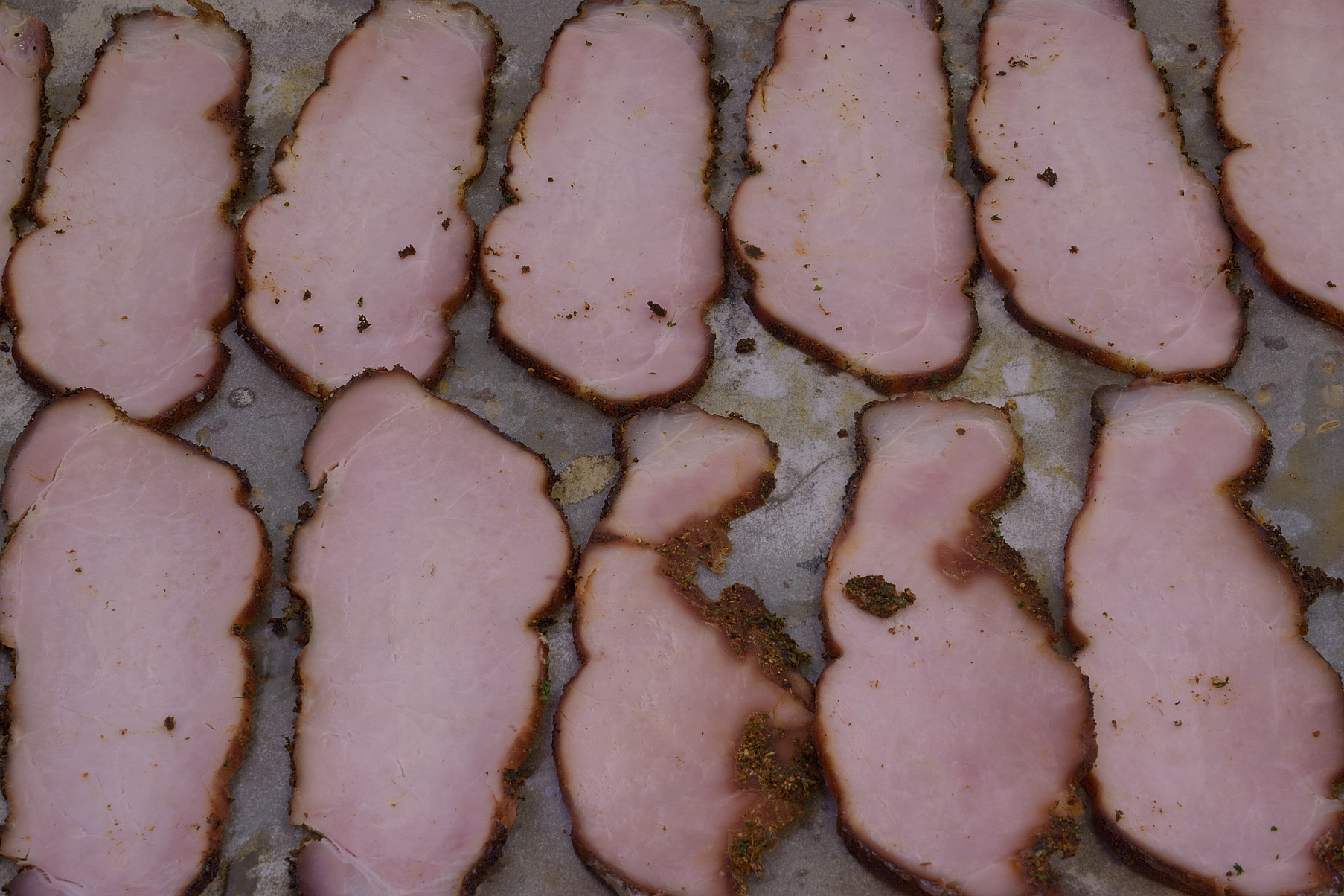
Slice the pork as thin as possible “without compromising its structural integrity.” Certainly, the pork can be shredded to make the standard pulled pork item, I’m assuming we don’t really want to do that except as a last resort. Spread the slices out. Any place that they touch each other will take longer to heat than the rest of the slice, so, well, you get the idea. Preheat the oven to 225 F/107 C.
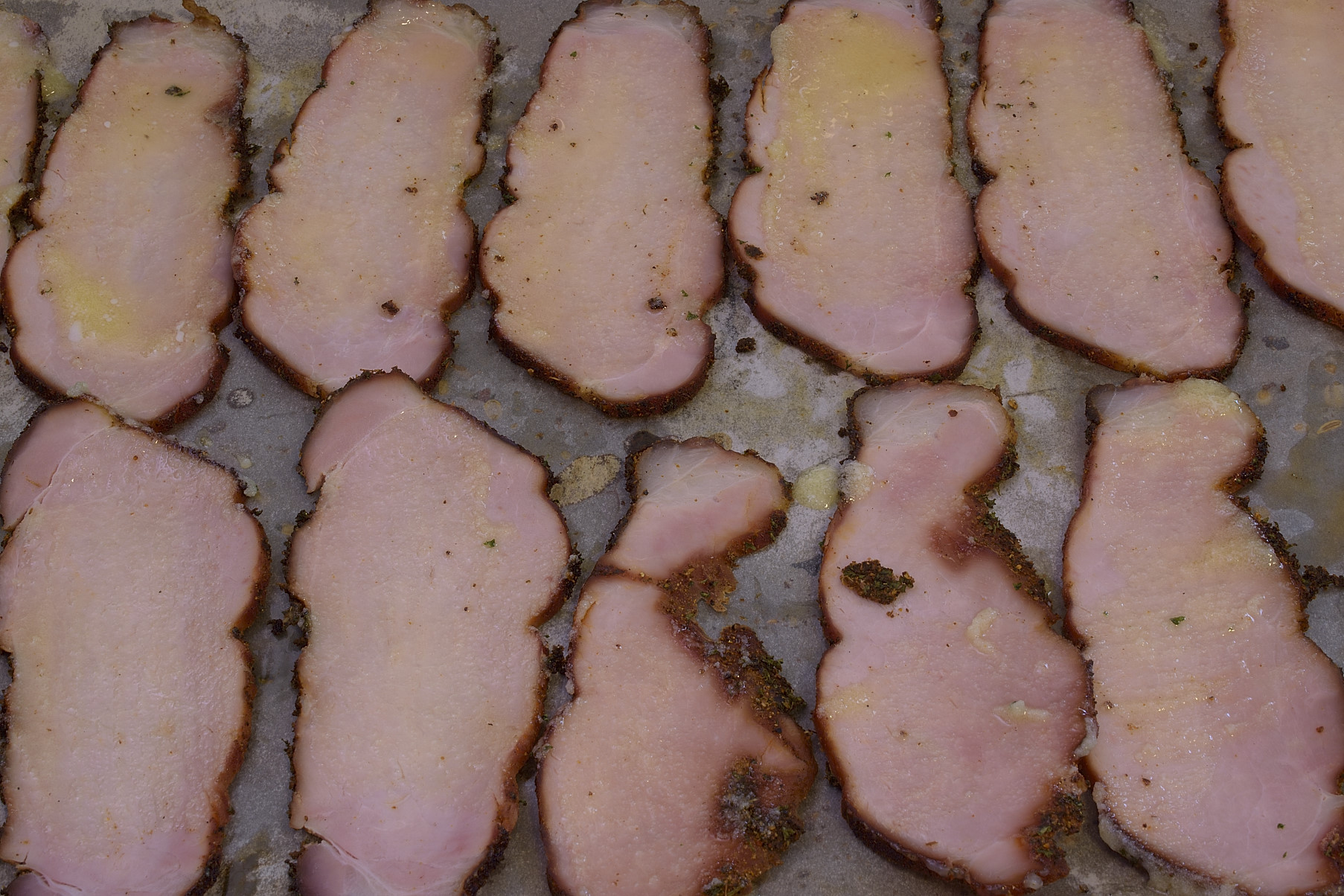
Use a pastry brush to paint the slices with melted butter. The idea is not that the butter will soak into the meat. The idea is that the butter will prevent moisture from escaping (to some degree). Really. It works. After that, there are other options as well.
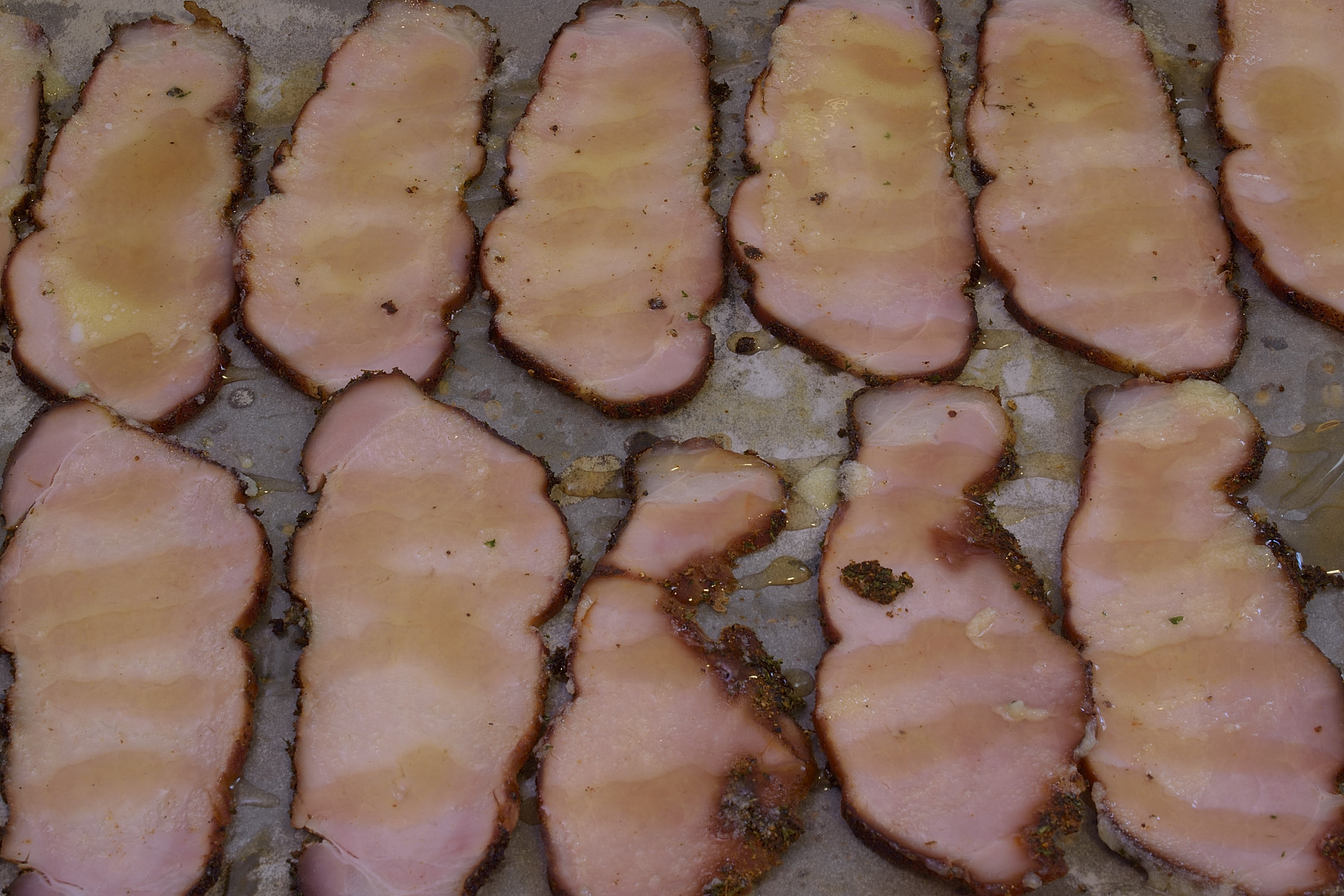
In the picture above, we drizzled with a little maple syrup, er, um, “pancake syrup,” which, as we all know, is mostly corn syrup with a little maple extract in it. I love real maple syrup, but the price is a little nuts to use it for this.
Stage the sheet pan of pork into the oven–the surface of a pan would be too hot, and even steam will compromise the texture. An infrared thermometer is great for getting a reading on exactly how hot the pork is at a given moment, but because the surface area is so large, it’s not going to take more than 5-10 minutes. Just about the time it takes to grill some buns, for example.
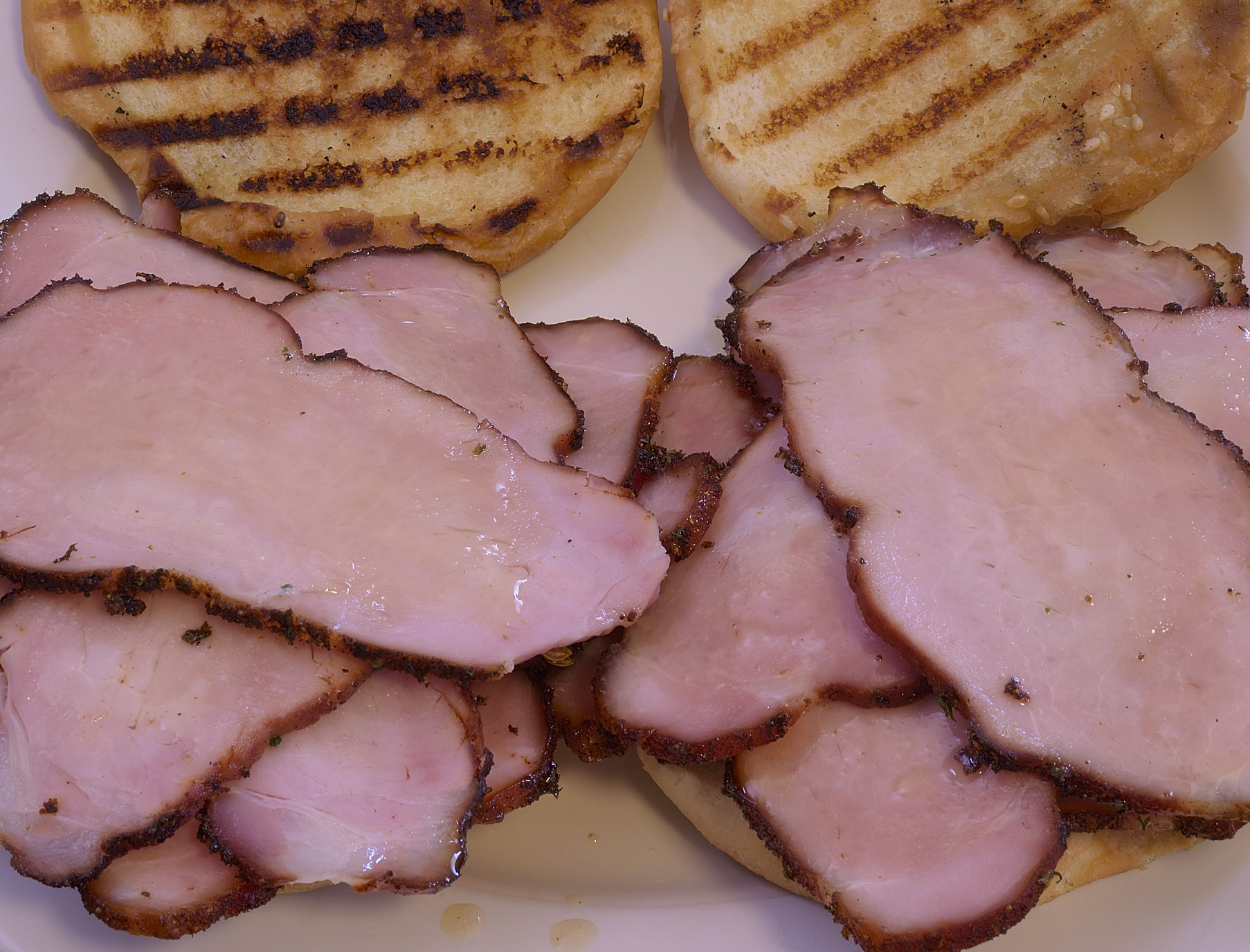
Stack the meat up.
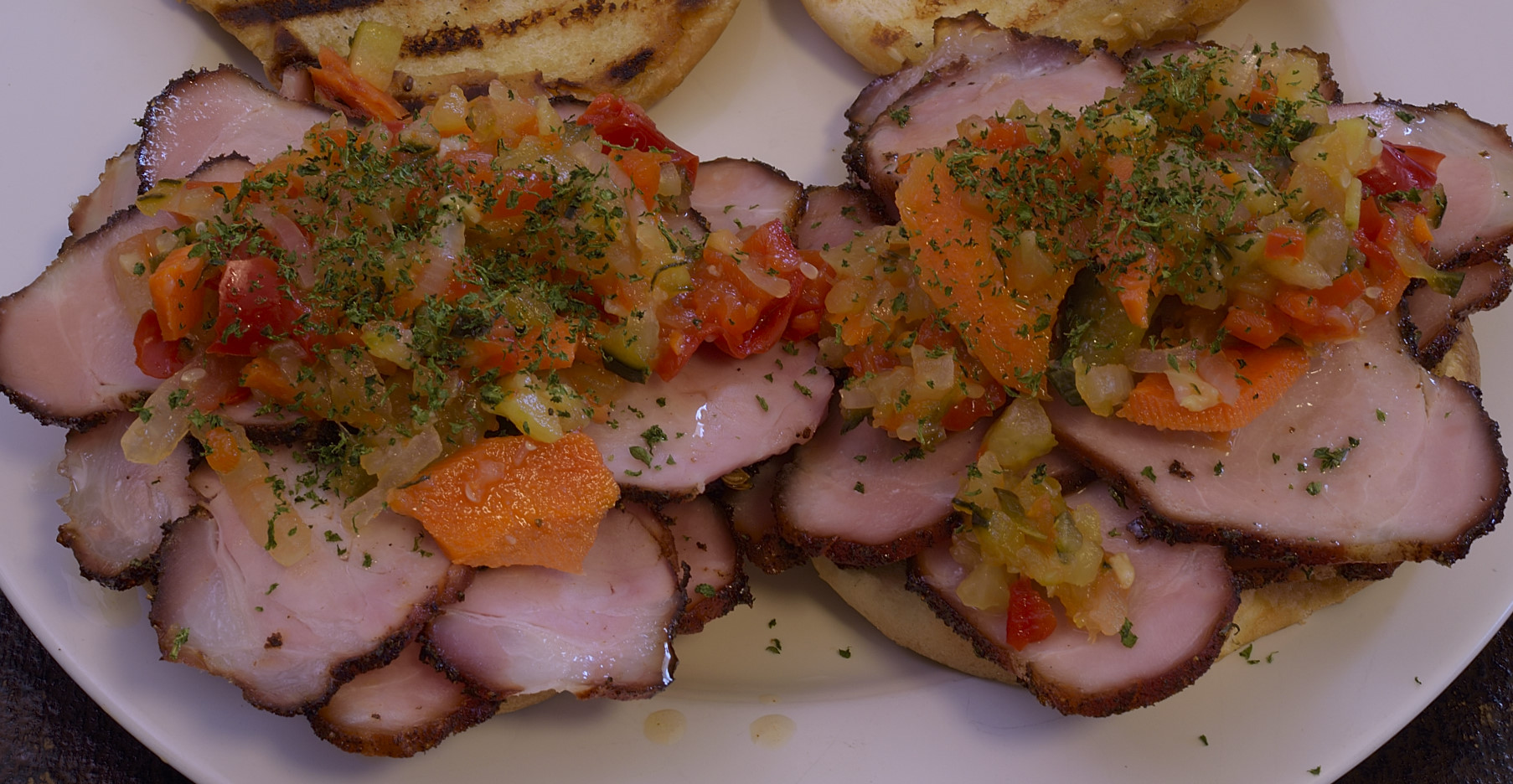
Because of the quarantine, we didn’t have any lettuce or the usual sandwich accompaniments.
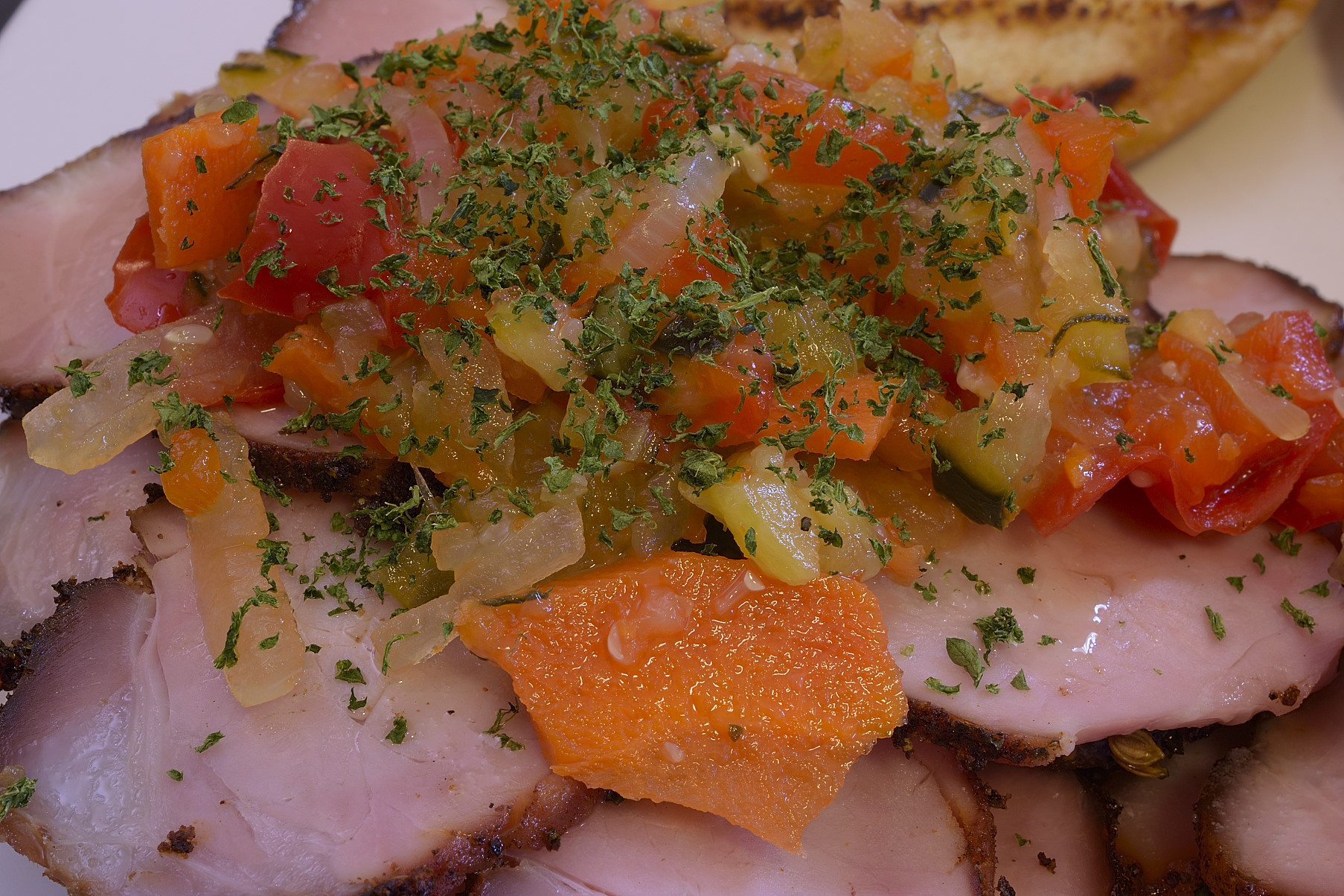
We did have some pickled vegetables that I chopped up to make a reasonable facsimile of Muffaletta relish.
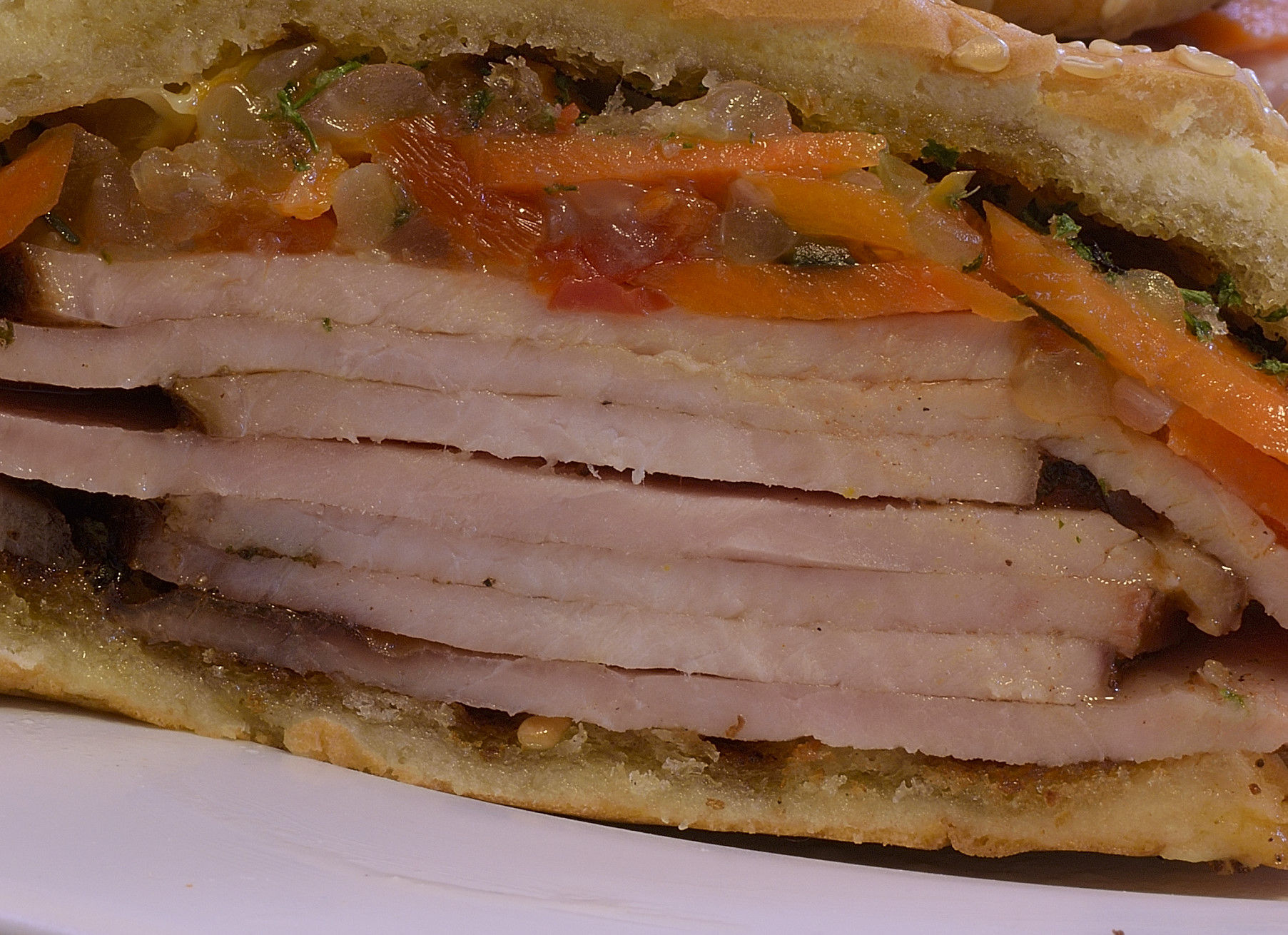
Okay, that worked pretty good. Not my best picture. Delicious though. We’re on to something.
There’s another approach. Put away the melted butter and use your favorite barbecue sauce or Catalina dressing. I used some ingredients that I had around to make this one–we’ll call it our “Isolation Lamination.” A sort of “Shelter in Place Base.”
Tamarind paste, 6 oz/150 ml, or 3 oz/75 ml Worcestershire sauce.
Ketchup, 1 cup/225 ml.
Garlic powder, 2 Tablespoons.
Sugar, 1/3 cup/50 ml.
White vinegar, 2/3 cup/100 ml.
Salad oil, 6 oz/150 ml.
The oil is there for a reason.
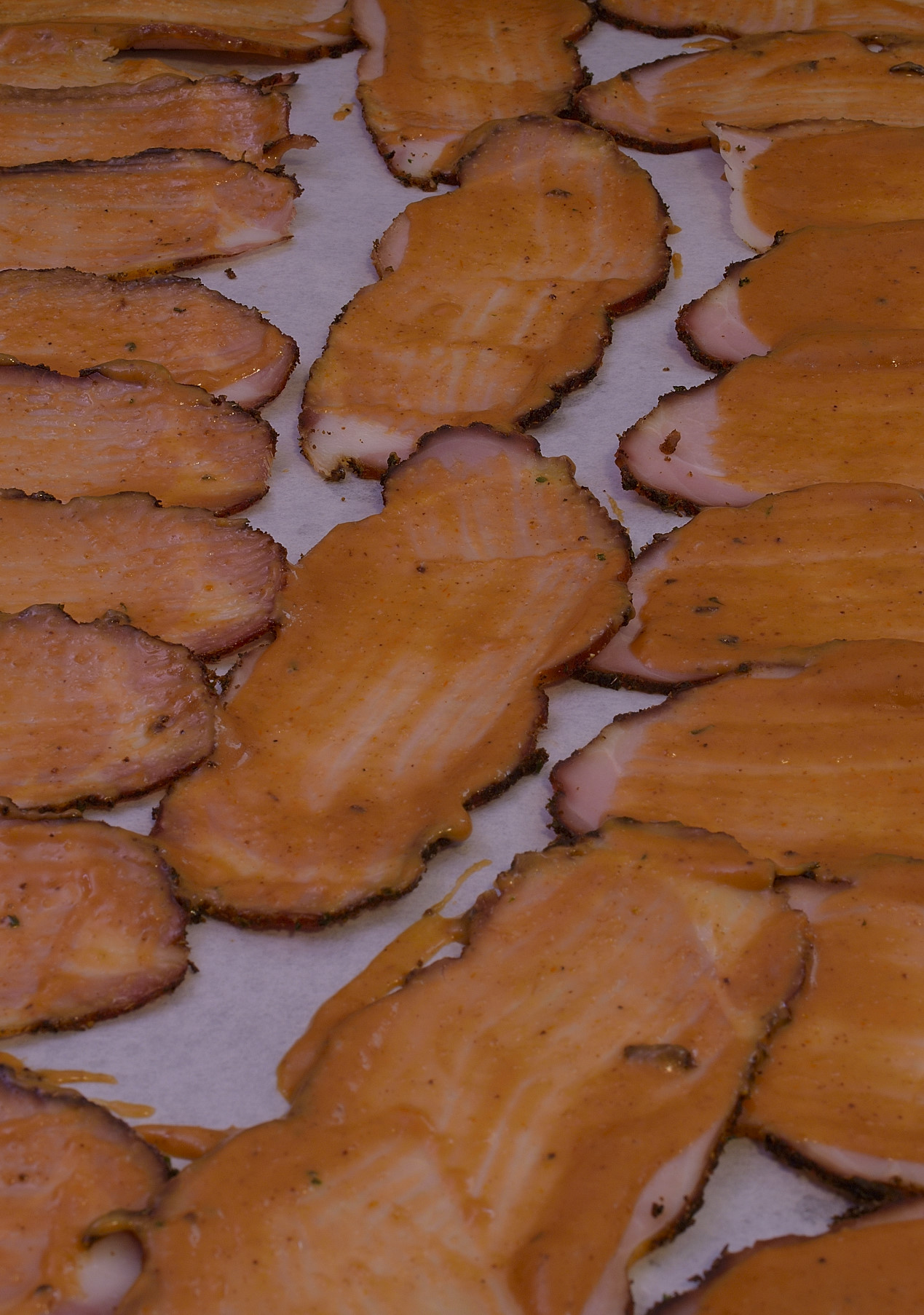
Again, it reduces the loss of moisture. We’re talking droplets.
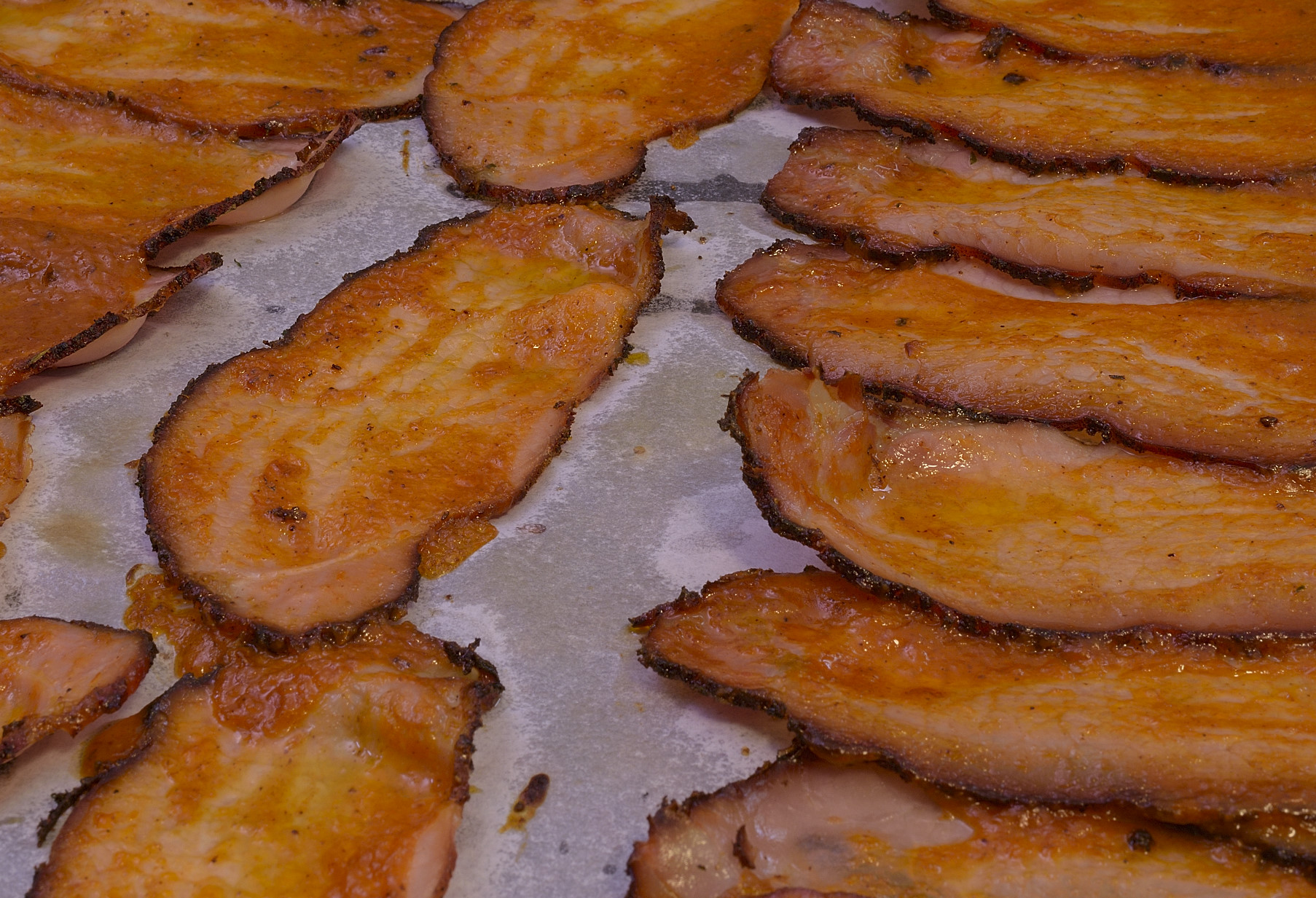
Into the 225 F/107 C oven for 5 or 10 minutes until you get that kind of glisteny appearance.
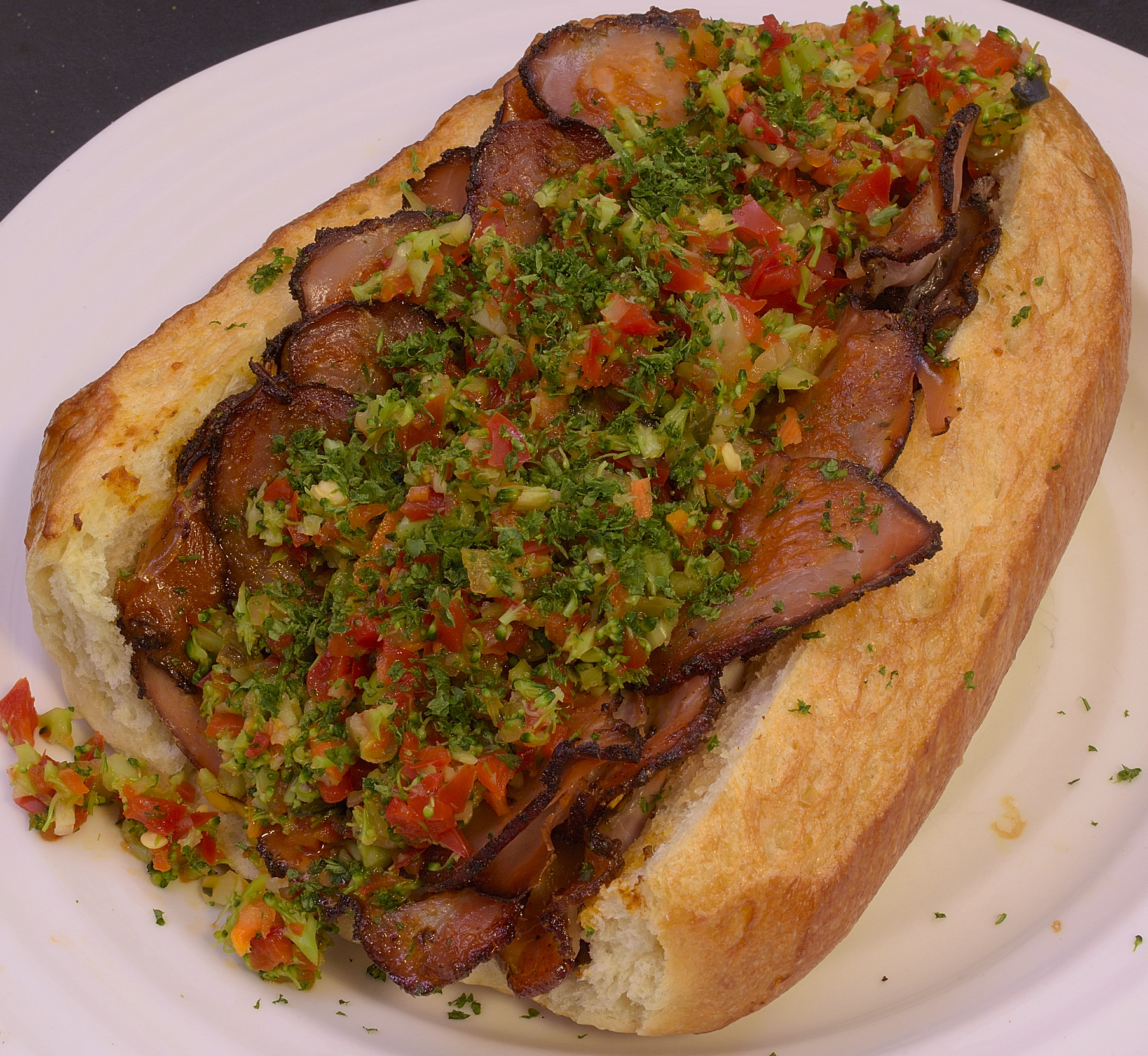
Split French roll, I layered the pork in and used the Muffaletta again–I added a little chopped broccoli to it this time.
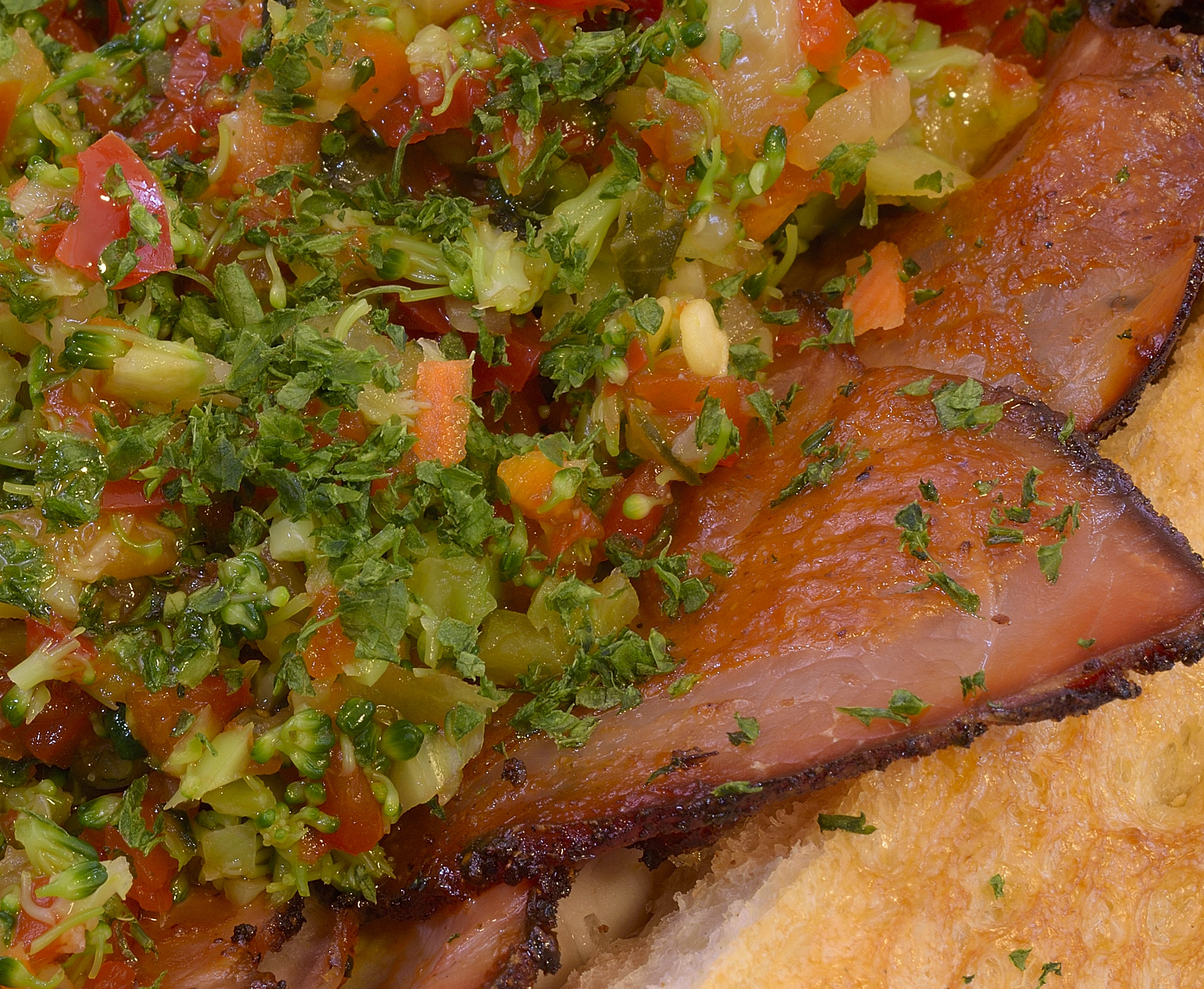
Don’t put broccoli in the pickled vegetables until the last minute–vinegar turns broccoli black, along with most other green vegetables.
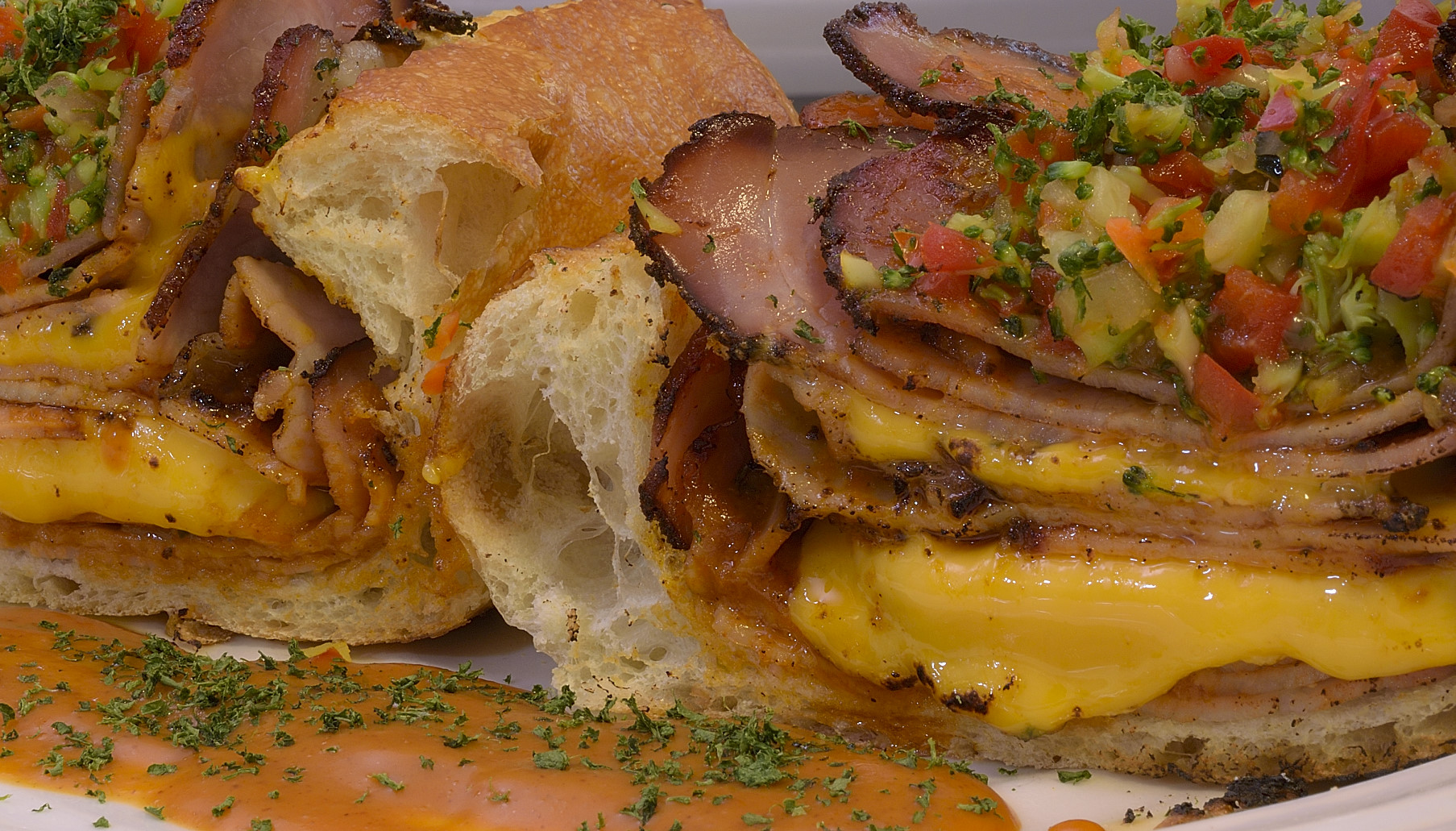
Did I mention that I put some sliced American in there too? I’m reminded of the days of government cheese, many of you are just too young to remember the 70’s. I got a guy who goes to the store for me, but his car is broke down, so, allowances must be made.

